If you are looking for a list of naturally white foods, good news! The list below contains all the different types of foods that are white. Vegetables, fruits, grains, beans, legumes, mushrooms, and edible wildflowers that either have a portion of white or are completely white in color.
Some white foods contain the necessary nutrients that we need in our diet. You should always make sure that you have a colorful plate of food, though. By adding healthy white foods to your diet from this list, you will go beyond eating the rainbow.
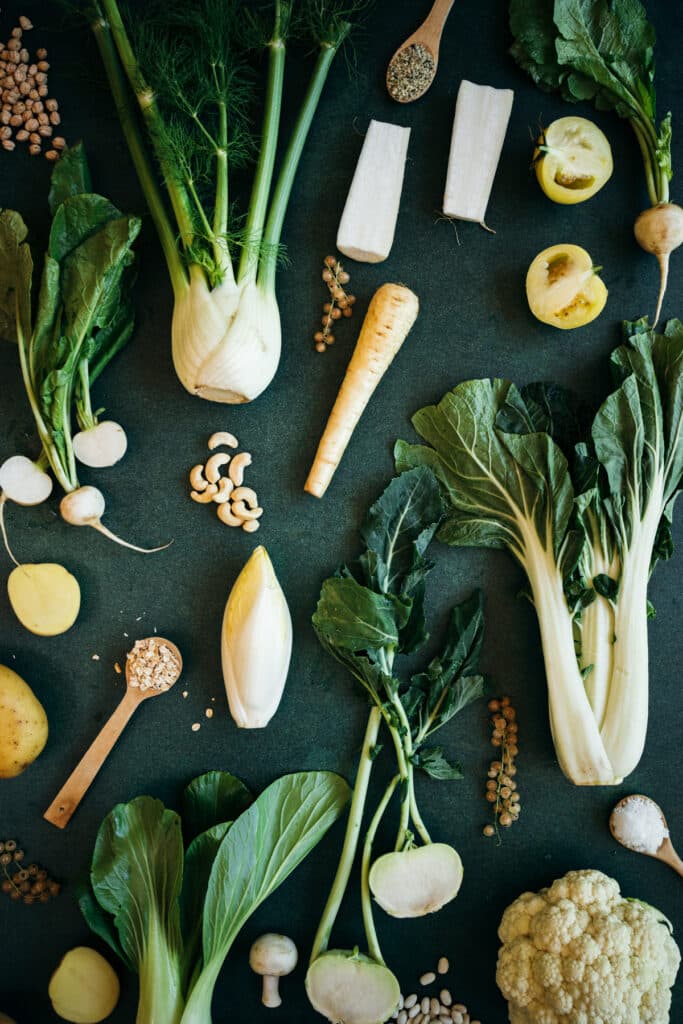
What gives white food its color (or lack thereof)?
White food generally refers to foods that are white in color. There are naturally unprocessed white foods, such as fruits and vegetables. Then there are processed and refined foods that are white. For example, white flour, white rice, white pasta, white bread, and white sugar are all refined white foods. The difference between these refined white foods and their whole food counterparts is processing and grams of fiber.
Foods normally get their color from naturally occurring agents, and with white foods, it’s down to a pigment called flavones. This is the pigment present in white vegetables, which stays white in an acid medium and turns yellow in an alkaline medium. Overcooking will also turn white vegetables yellow or grey.
Nutrients like anthoxanthins, sulfur, allicin, and quercetin are found in all naturally white foods and help the body lower cholesterol and blood pressure.
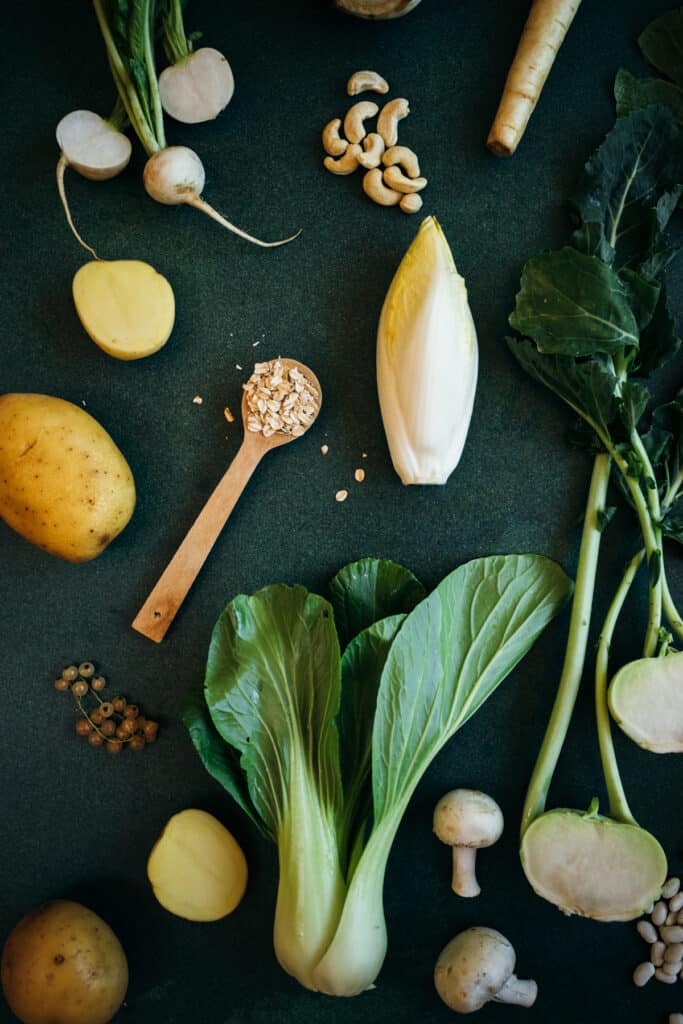
The List: 130 White Foods
Here is our comprehensive list of white foods. This list includes any white plant-based foods that exist. If you are looking for more colorful foods, check out, Foods That Are Pink, Foods That Are Blue, Foods That Are Black, Fruits That Are Green, Foods That Are Orange, or Foods That Are Yellow.
What Vegetables Are White?
White vegetables contain small amounts of phytonutrients, EGCG, allicin, isothiocyanate, and anthocyanidins. They provide health benefits for your bones, circulatory health, and arterial function. Here is a list of vegetables that are white in color, their origin, taste, and best ways to be enjoyed.
1. Albino Beet
With a slightly sweeter taste than the original beet, this root vegetable is a pure white heirloom beetroot. It originates from Holland and is easy to grow, so it’s perfect for beginner gardeners. It is best enjoyed raw, grated over salads to add extra sweetness to the meal.
This beet would be divine in this Apple Crisp With Beets recipe.
2. Amazing Cauliflower
The cauliflower head itself has a color of pure white, but it is surrounded by green leaves when it grows. Cauliflower was originally grown in Asia around the Mediterranean Sea and did not start growing in the United States until the 1900s.
It is best eaten when steamed, boiled, roasted, or added to a soup recipe, and it is an excellent source of vitamin C and a good source of vitamin B6.
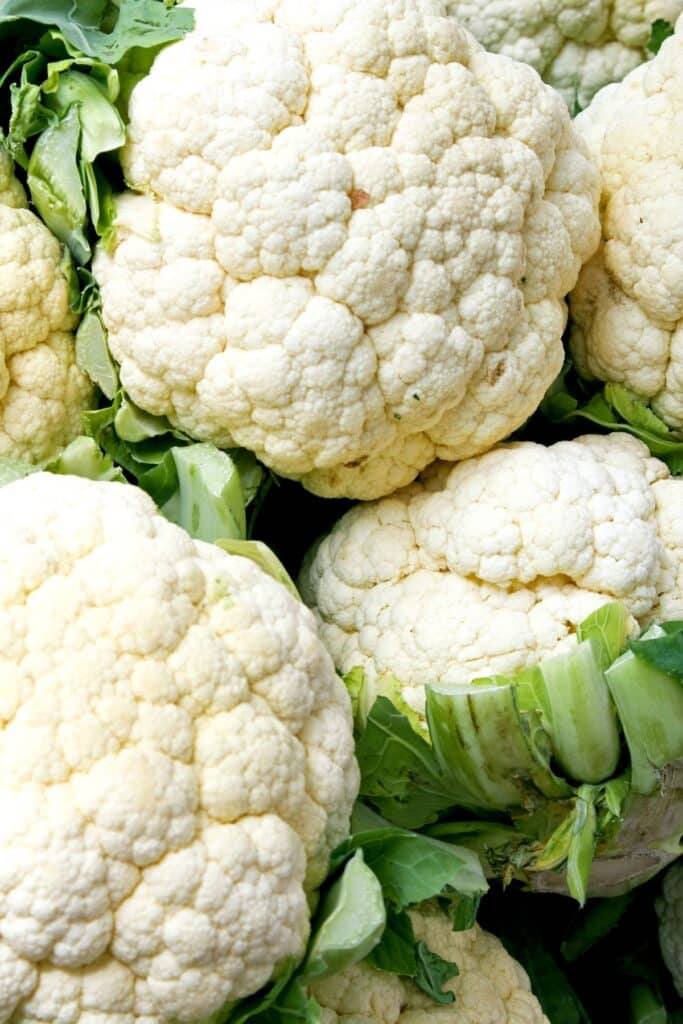
3. Atlantic Potato
Like the majority of potatoes, the Atlantic Potato has light brown outside skin and, when cut into, has a faint yellow-to-white color. It is a mid-season potato variety, and its primary manufacturing use was for making potato chips in 1976.
They would also work for this Baked Home Fries recipe.
4. Autumn Giant Leek
This vegetable has a white bottom half where the roots sit and a gradual white-to-green ombre going up to the top. They are traditionally grown throughout Western Europe, their harvest period is long, and they can even withstand mild frost. It is best enjoyed chopped and sauteed or added as a soup ingredient.
5. Beacon Chipper Potato
This is another round white potato manufactured for the chip processing market. It has a light brown outer skin and a creamy white interior. The origin of Beacon Chipper is currently unknown.
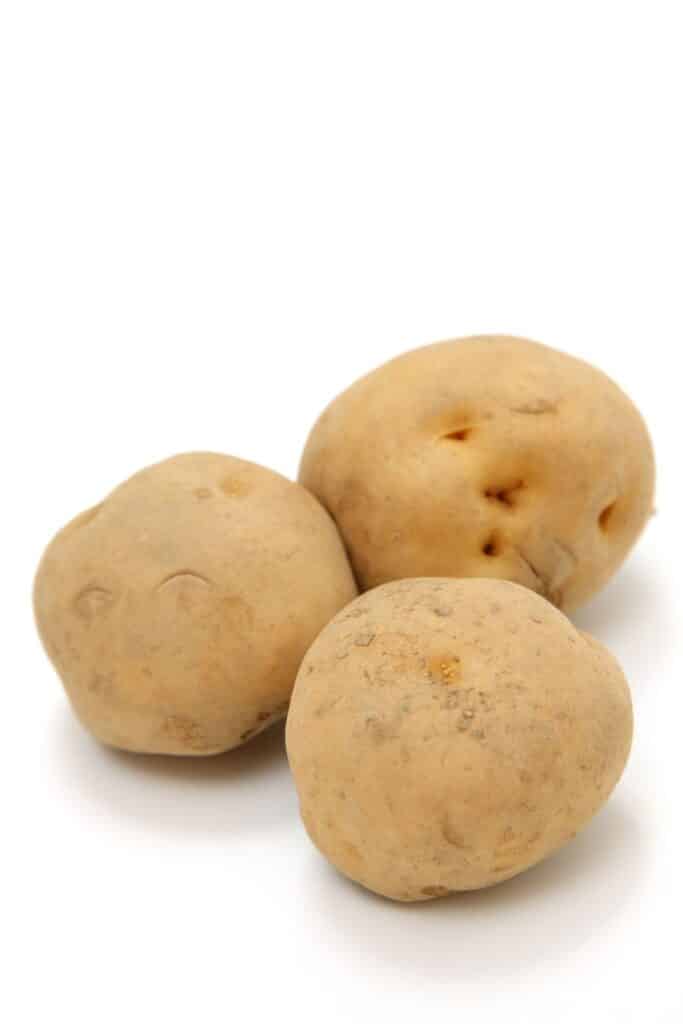
6. Bulgarian Giant Leek
Bulgarian Giant Leeks are long, flat stalks that are white with two green leaves at the top. The leaves are usually between 12-16 inches long (~30-40 cm). The bulb can grow up to 7 in diameter (18 cm) and weigh over six pounds (3 kg).
This vegetable has been grown in France since the 16th century when it was introduced by German settlers. The giant leek has a mild flavor that can be enjoyed raw or cooked. It is an excellent source of vitamins B6, C, and K.
Try this leek in a Vegan Potato Leek Soup for extra flavor!
7. Carentan Leek
This is another variety of leek with a broad, flattened green leaf and a white bottom half where the roots are. It can grow up to 6 inches long. It is one of the oldest known vegetables, with archaeological evidence of it being grown in Mesopotamia as far back as 2000 BC.
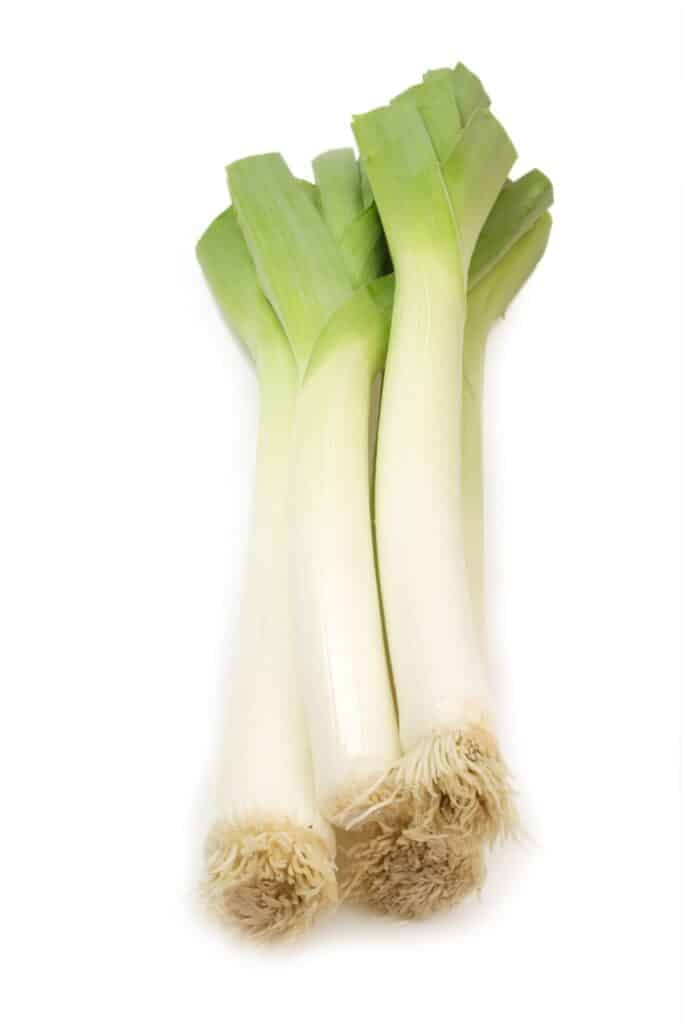
8. Chinese White Celery
This is a type of celery with thick, snowflake white stalks and light green leaves. It’s grown in China and is resistant to pests. It is an ideal vegetable to add to Asian soups and stews. It is rich in vitamin K and a good source of vitamin B9.
9. Chioggia (Bassano) Beet
This beet is the most whimsical of them all. Its beautiful alternating red and white rings around its root resemble the pattern of a candy cane. It’s grown in Italy and has a mild flavor. It has a less earthy flavor compared to other beets and is best served raw in salads.
10. De Jesi Cauliflower
De Jesi cauliflower is a stunning creamy white color and has lobed, fleshy leaves instead of the flower-like florets we’re used to seeing on cauliflower plants. It’s grown in Italy and has a mild nutty and sweet flavor.
11. Early White Kohlrabi
This vegetable is a member of the cabbage family. It has pale green bulbs and crisp white flesh, and its stem is edible. It has a mild, sweet flavor and can be eaten raw or cooked. The leaves can be used as a salad green. It is said to have been first grown in Ireland in 1734.
12. Five-Color Silverbeet Swiss Chard
The five-color silverbeet Swiss chard comes in a variety of five different colors—red, yellow, orange, white (or light green), and pink. This variety is the most common variety of chard in the United States. It originated in Australia and has a mild yet delicious flavor that is best enjoyed steamed.
Interested in more vibrant foods? Check out this post, 75 Foods That Are Pink.
13. Fordhook Giant Swiss Chard
The Fordhook giant Swiss chard has broad dark leafy green leaves along with white veins and stalks. It is a vigorously growing vegetable that will provide fresh greens from early summer well into fall. It is a well-established variety from the 1920s and is naturally grown in the Mediterranean. It has a slightly bitter and earthy flavor and is an excellent source of vitamins C, E, and K.
14. French Breakfast Raddish
This variety has a white base by the roots, a beautiful pink middle, and tops of vibrant green leaves. It has the same growth habits as other radishes. It can be grown quickly in spring or fall and was first recorded in Europe in 1879. This radish has a mild peppery flavor, similar to that of a watermelon radish but with a hint of nuttiness. It is also known for its beautiful purple color when cooked!
15. Giant Prague Celeriac
This root vegetable has light brown-yellowish skin and beautiful green stems. Once you cut it open, it displays a stunning white and tan marbling inside. With medium green foliage, this variety stores well and is packed full of good flavor. It originates from the Mediterranean region and is high in fiber and a good source of potassium.
16. Giant White Kohlrabi
This vegetable looks like an oversized turnip with smooth skin that’s white and purple at the top of the stem end (where the leaves begin). It is said to have originated in northwestern Europe (most likely Germany). The taste is similar to kohlrabi (which is also a type of cabbage) but sweeter and milder than most kohlrabi varieties available today.
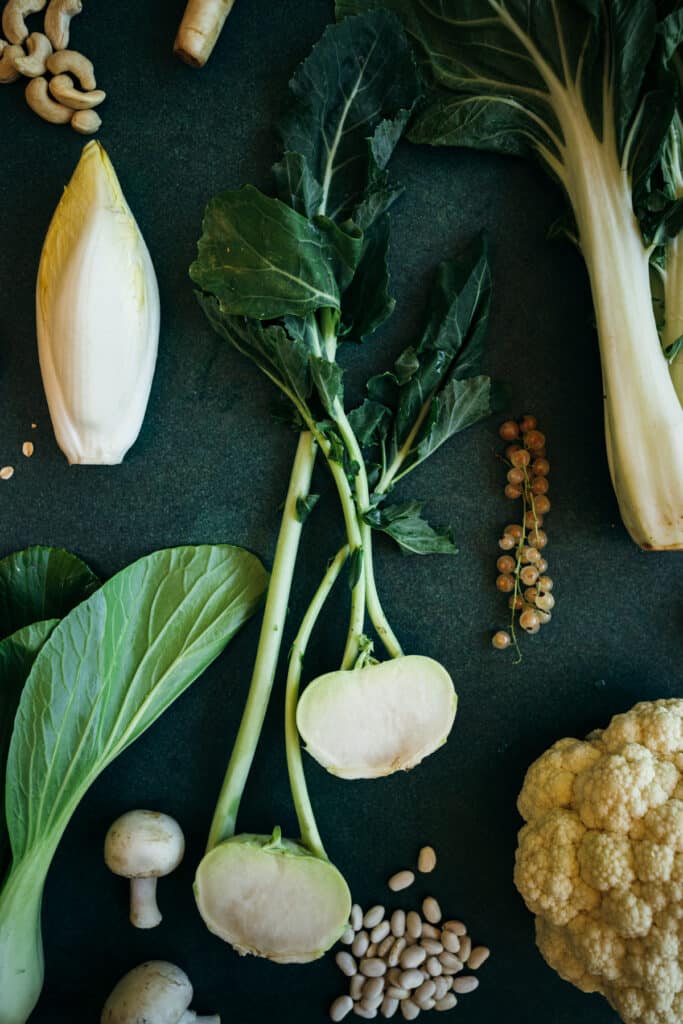
17. Gobbo Di Nizzia Cardoon
This is a very rare cardoon (a type of thistle) with broad white stalks. It comes from Italy and has been popular in Europe since ancient Rome. They have a similar flavor to artichoke hearts. Italians eat them raw or dip them in olive oil. The root can also be cooked and eaten like a parsnip.
18. Harris Model Parsnip
This parsnip is pure white with perfectly straight roots. It is one of the more commonly grown vegetables thanks to its sweet and nutty flavor.
19. Hollow Crown Parsnip
The hollow crown is one of the oldest varieties and has a white inside with a slightly yellowish tinge to the skin. It is grown in Great Britain since at least 1820. Its creamy white roots have a very sweet flavor.
20. Japanese Minowase Daikon Radish
This is a popular old Japanese radish with giant white roots that can grow 24 inches (61 cm) long and 3 inches wide (7.5 cm) with pretty light green stems. It is originally native to continental East Asia. It has a very sweet and crisp taste and is best enjoyed steamed or stir-fried.
21. Kennebec Potato
Kennebec potatoes are medium to late-maturing white potatoes. They are botanically classified as Solanum tuberosum ‘Kennebec,’ and are one of the most commonly grown white potato varieties in the United States. They are best used for fries, boiling, or chipping.
You could also use this potato in this Oven-Baked French Fries recipe.
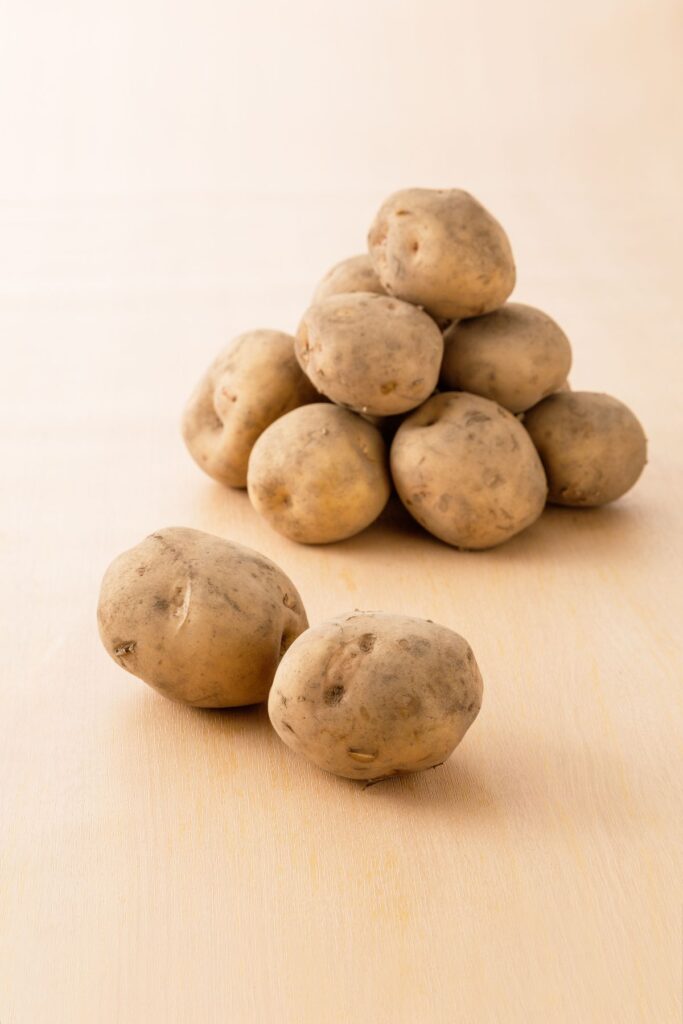
22. Kuttiger Carrot
This is a stocky snow-white Chantenay-type carrot with a large, broad top half and a skinny bottom end by the root. It is said to have originated in Afghanistan but was kept alive in European markets by rural women farmers in Kuttiger, Switzerland, for over 300 years. It can easily be mistaken for a parsnip, but it has the same mild and earthy taste as the standard carrot.
You can use this white carrot to make this Carrot Ginger Soup.
23. Lunar White Carrot
This is a new variety of white carrots that is almost entirely coreless and can grow up to 12 inches when mature. It has a nice mild flavor similar to the standard orange carrot and is an excellent source of vitamin C.
24. Music Garlic
Music garlic has a sturdy, long, and vibrant flower stalk, with enormous bulbs wrapped in white with a slight purple hue. Music garlic is a member of the unique porcelain garlic family, and it has a high allicin content which will help boost the immune system in many ways. It is believed to have been brought to Canada from Italy during the 1980s.
25. Ontario Potato
Ontario potatoes are classified as long round white potatoes that can come with a variation from brown and rough skin to smooth and colored. This potato was developed in the 1960s by Garnet Johnston in Guelph, Ontario, Canada. They have an earthy, nutty flavor and a low sugar content.
This potato would make great Crispy Baked Rosemary French Fries!
Interested in more vibrant foods? Check out this post, 80 Foods That Are Blue.
26. Paris Island Cos Lettuce
This lettuce has a white base and a yellow-to-green ombre color to its leaves. It is a romaine-type lettuce developed around 1950 by Clemson University and named after Parris Island in South Carolina. The Paris island cos lettuce is tender and succulent, with a mild flavor.
27. Precoce D’argenteuil Asparagus
This gourmet variety is highly esteemed in Europe for its delicious stems with rose-tinged buds that can be blanched white. Precoce D’Argenteuil asparagus has been grown in France since the late 1800s and is frequently used in many popular French dishes. It is very aromatic, slightly bitter, and is best eaten cooked in dishes or sauteed alone in olive oil.
28. Sunchoke
The Jerusalem artichoke, also called sunroot or sunchoke. It looks very similar to a ginger root with a light brown outer skin and a white center. This species of sunflower is native to central North America. They have a mild, sweet, and nutty taste and can be eaten raw and dipped into hummus.

29. Texas Early Grano Onion
Like most onions, the Grano onion has an orangy brown outset skin and a white center. It was originally introduced to the U.S. in 1925 from Valencia, Spain. It is best eaten cooked in dishes to add flavor.
30. Tokinashi Turnip
These unique turnips have beautiful pure white skin and center with long, vibrant green stems. The incredibly rich and sweet Tokinashi turnip originated in Japan and is best eaten roasted or sauteed.
31. White Asparagus
White asparagus is the same as green asparagus, except it’s white. (Obviously.) It is grown in conditions that lack sunlight, so it can’t turn green. This results in a softer, sweeter vegetable.
If you’re looking for the quickest asparagus recipe try out How To Microwave Asparagus.
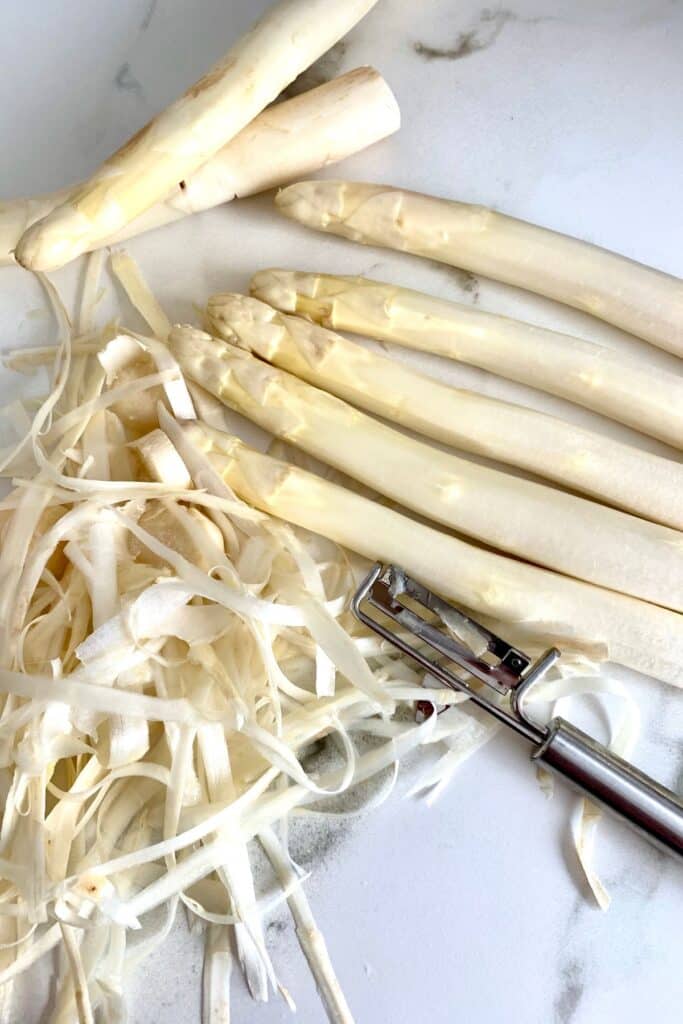
32. White Creole Onion
These medium-sized, round bulbs have translucent white flesh that is very firm. They are a short-day variety that originated in Florida and are best eaten cooked in dishes to add flavor.
This onion would be delightful in this Hearty Lentil Soup recipe.
33. White Hailstone Radish
These snow-white radishes are an heirloom variety called White Hailstone. Though no one knows the exact origin of Hailstone radishes, they are featured in seed catalogs at least as far back as 1908. They have a very mild and crips taste, so are best eaten in soups or can be pickled too.
34. White Horehound
This is a flowering plant in the mint family, native to Europe, northern Africa, and southwestern and central Asia. The flower itself is white and is surrounded by green mint-like leaves. White horehound is most commonly used for medicinal purposes to help with digestion problems.
Interested in more vibrant foods? Check out this post, 100 Foods That Are Yellow.
35. White Rose Potato
This is an oval-shaped potato with a thin outer skin that is light tan in color and smooth overall with a few very small eyes, and the center meat is a creamy white. The White Rose potato originated in New York in 1893 when it was bred from a variety of Jackson potatoes using a true seed ball by Rachel Chapman. It is best eaten boiled for mashing or fried.
36. Unzen Early Flat Onion
The ultimate salad onion, this flat white variety is crunchy and juicy and drips with sweet onion flavor. This short-day onion hails from Nagasaki, Japan, and is considered an important variety in Japanese culture and cuisine. It is best eaten cooked in dishes to add flavor.
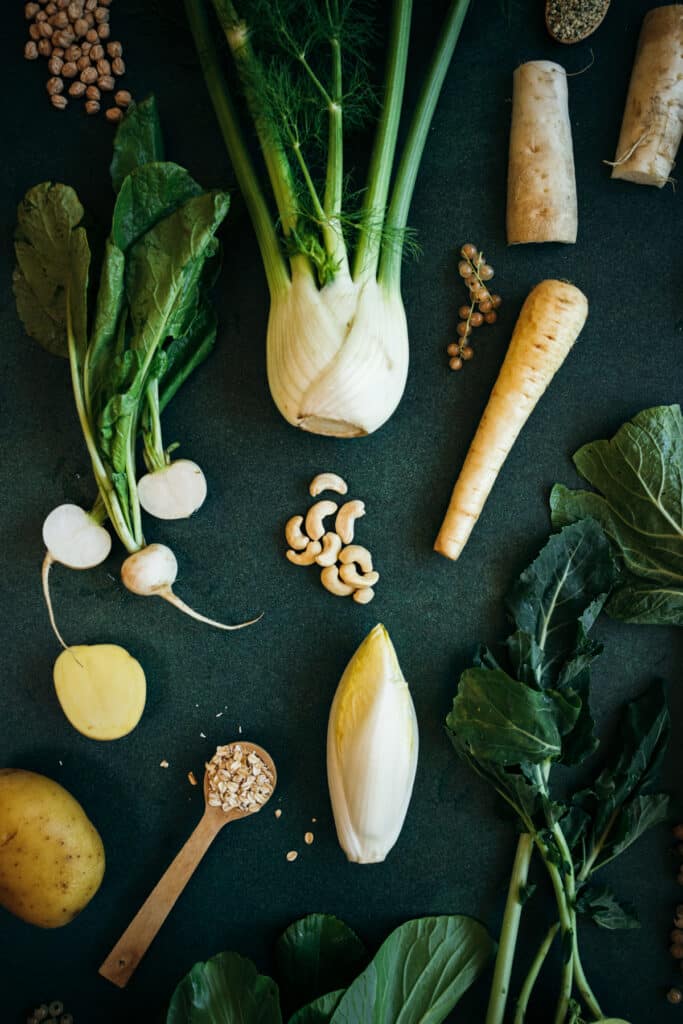
What Are Some White Fruits?
White fruits contain allicin, isothiocyanate, quercetin, and anthocyanidins, they provide health benefits for your bones, circulatory health, and arterial function. Here is a list of fruits that are white in color.
37. Baobab
This unique white fruit is found inside hard green and yellow pods that hang upside down from trees. It is usually consumed as a powder that is made from drying and grounding up the fruit. The baobab fruit is native to the African continent and the southern Arabian Peninsula. It has a pleasant citrusy flavor and is rich in vitamin C, B6, and iron.
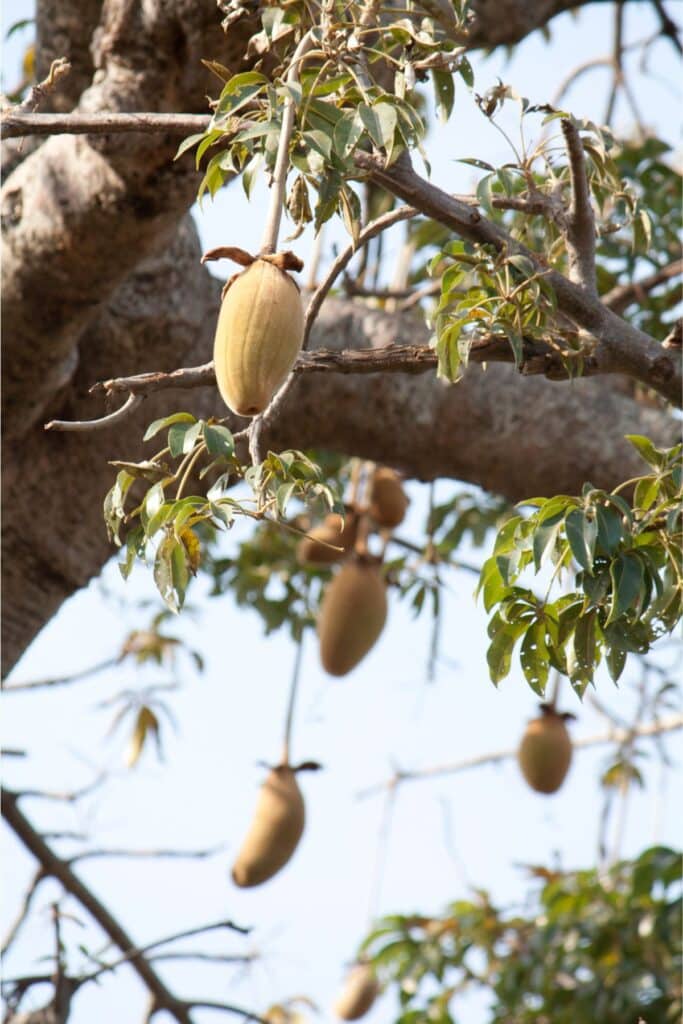
38. Banana
The classic banana with its bright yellow and sometimes green outer skin and a creamy white inside. Their origin is located in Southeast Asia, in the jungles of Malaysia. Indonesia or the Philippines. Bananas are an excellent source of potassium and fiber.
You can use your standard banana as a base for delicious vegan smoothies such as this Avocado Banana Smoothie!
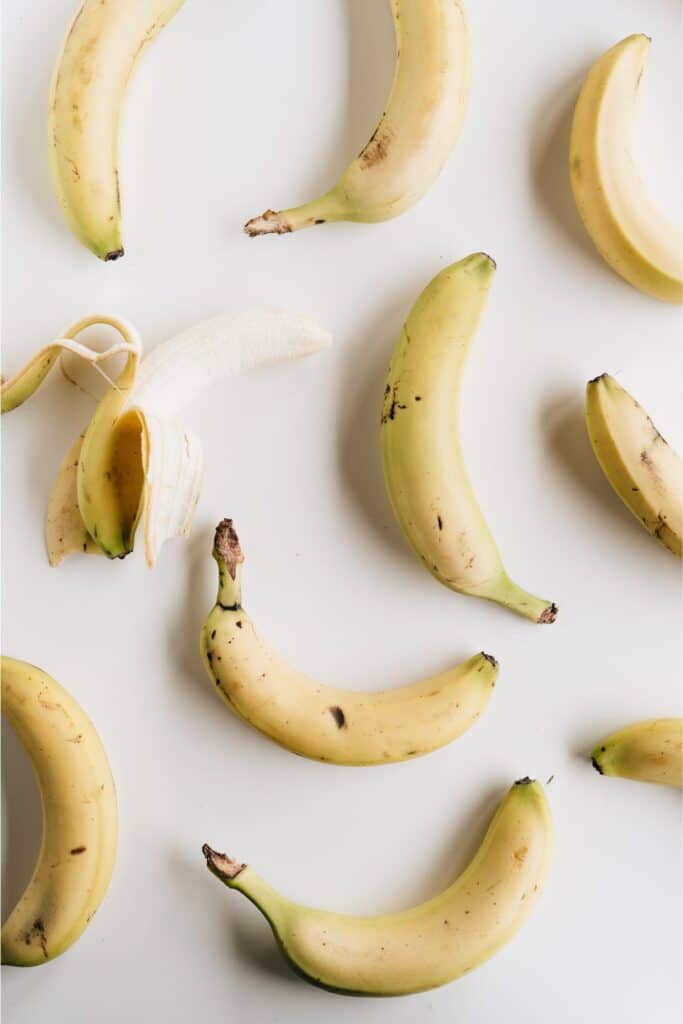
39. Casper Eggplant
This particular vegetable gets its name from having a uniquely ghostly white outer skin!
The Casper eggplant originated in France and has a succulent mushroom-like flavor, so it’s perfect for soups and stews.
40. Clara Eggplant
Here is another pure white eggplant variety, the Clara. This is an Italian hybrid that produces gorgeous, brilliantly white fruit offset by a bright green calyx. The Clara eggplant has a mild taste with nutty undertones and a meaty, creamy texture.
41. Chinese White Pear
This white fruit is white on the inside with a white to mellow yellow ombre skin. The Chinese white pear is an interspecific hybrid species of pear native to North China. Flavor-wise, it has the crisp bite of an apple and the flavor of a deliciously fresh, sweet pear.
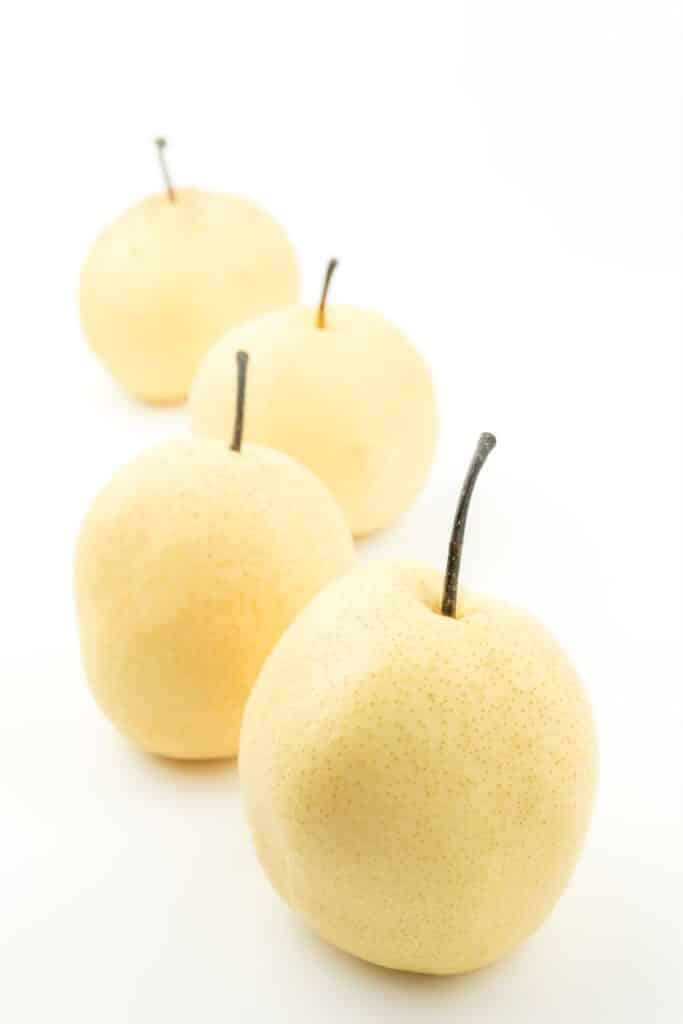
42. Coconut
The coconut is one of the most interesting fruits. With its dark brown husky outer shell and its creamy white meaty center, it can be used and consumed in many different ways. The origin of the coconut has been identified as the Central Indo-Pacific, the region between western Southeast Asia and Melanesia. Coconuts are rich in magnesium, copper, and selenium and hold many health benefits when added to your diet.
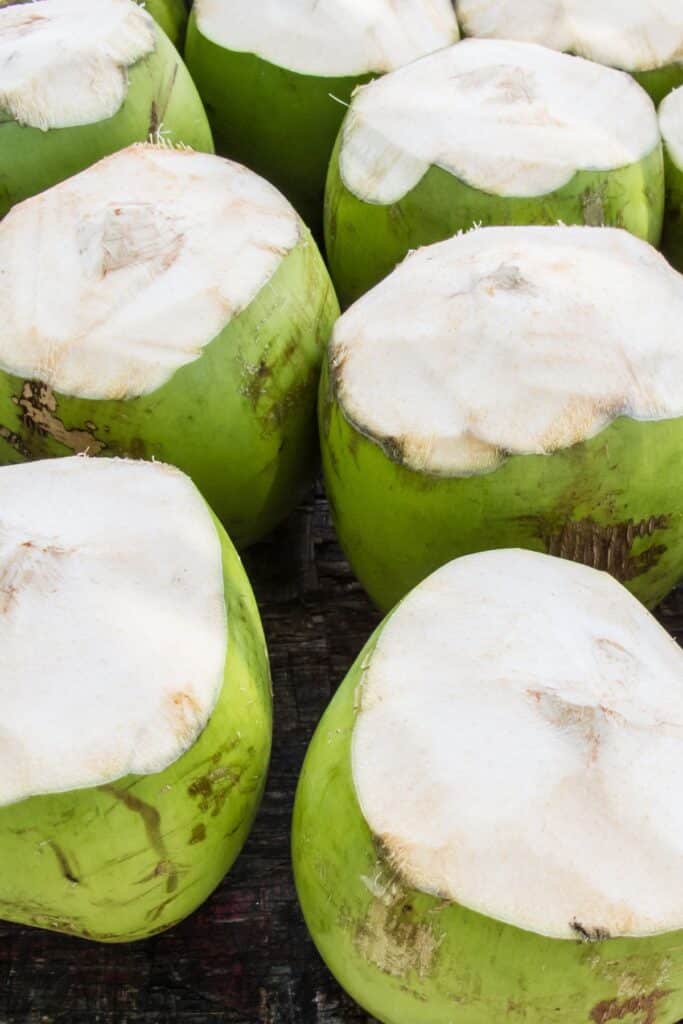
43. Dragon Fruit
Also known as pitaya or strawberry pear, is a tropical fruit known for its uniquely vibrant pink or yellow skin and its contrasting white inside with an array of tiny black seeds. The dragon fruit originates in Central and South America and tastes like a cross between a kiwifruit and a pear.
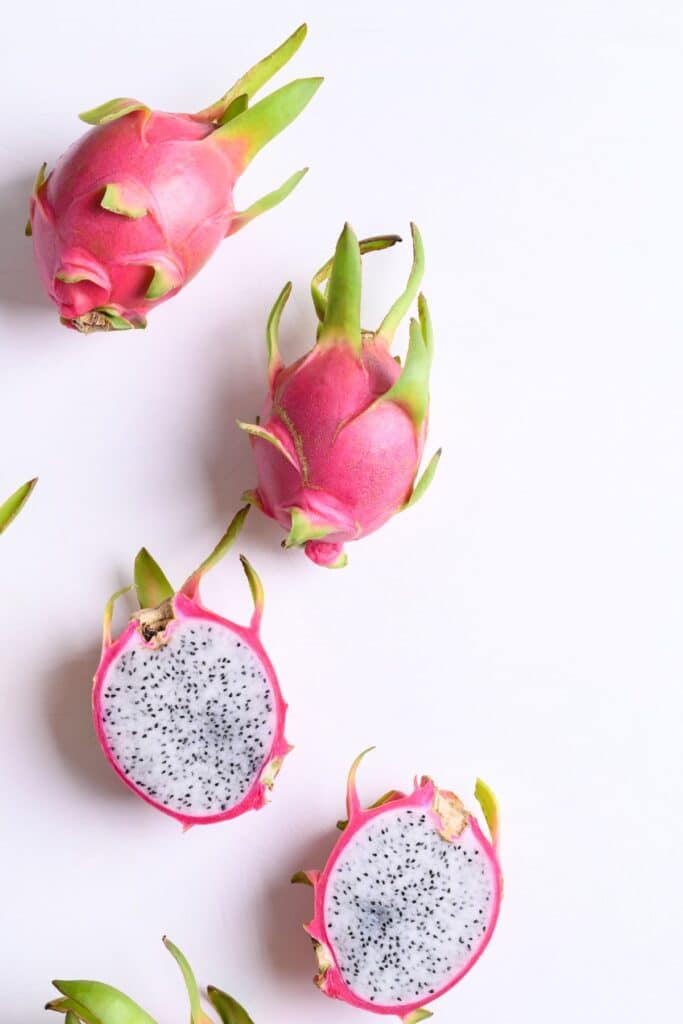
44. Flat White Boer Pumpkin
The flat white Boer pumpkin has pure white outer skin and a vibrant orange center with a shape similar to a wheel. The origin of this vegetable is unknown, but what is known is that it is a uniquely South African variety developed by the ancestors of the Dutch Settlers. It has a sweet taste and will be served best in soups, stews, or made into pumpkin pie!
45. Great White Tomato
The great white tomato is a type of beefsteak tomato characterized by being large and heavy with yellowy-white skin. This tomato was introduced to the public in the early 1990s by the Glecker Seed Company after a woman sent seeds to them for trial purposes. They have been described as juicy with a slight citrussy taste and remind people of a fresh melon.
46. Hara Madhu Melon
This is a beautiful teardrop-shaped melon with a white and green striped outer skin and a vibrant green and white ombre center. It was introduced in 1967 by Punjab Agricultural University in Ludhiana, India, and has an exquisitely sweet flavor.
Interested in more interesting foods? Check out this post, 85 Foods That Are Black.
47. Ice Peach
This unique fruit’s skin is a pale yellow to ivory and has smooth, taut, and fuzz-less skin. Ice peaches were developed in Rome, Italy, at the Experimental Institute of Fruit Growing. They have a subtly sweet flavor and would be served best in a pie or crumble.
48. Japanese White Eggplant
These eggplants are pure white in color with a regular green stem, botanically classified as Solanum melongena, and are members of the Solanaceae, or nightshade family. They are native to Japan and are believed to have been created from Chinese varieties. They have a creamy and tender texture and a mild and slightly fruity taste.
49. Jyunpaku Okinawan Pure White Bitter Melon
This is a very rare melon with pure white outer skin and a warty oblong shape. It is a variety that originates from Japan and has a bitter, weedy, almost alkaline taste to it. It is best enjoyed in Thai cuisine in soups and stir-fries.
50. Langsat
These unique fruits are similar to potatoes in their outer appearance, and inside, they have a white flesh containing inedible, bitter seeds. Langsat originated in the Southeast Asian regions and has a tangy, sour, and sweet combination of flavors, very similar to a grape.
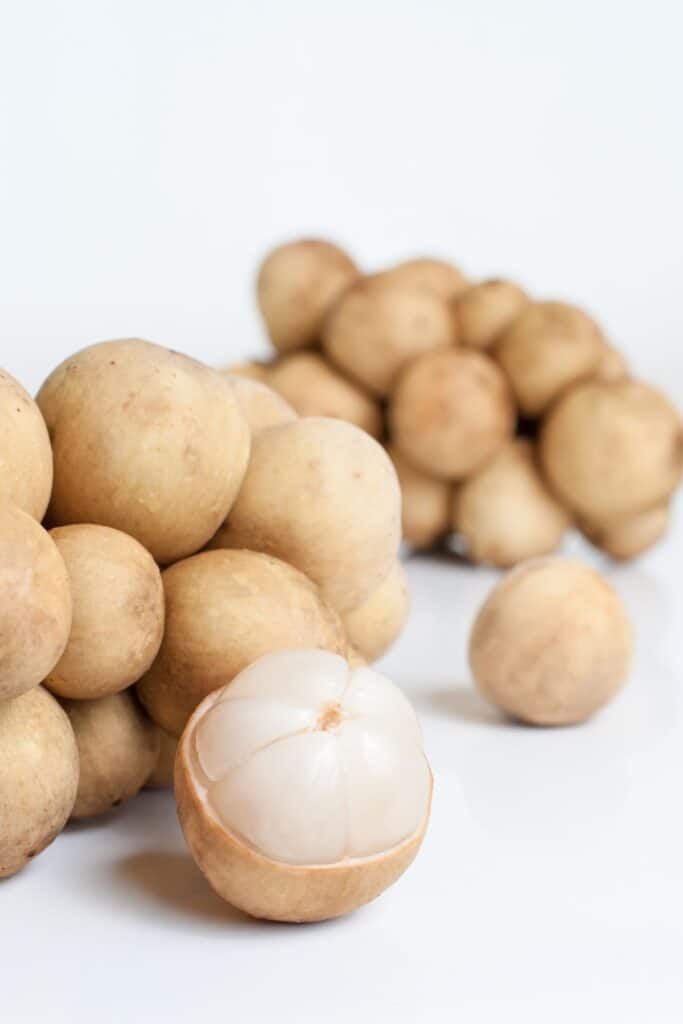
51. Long White Palermo Zucchini
This uniquely long zucchini has a beautiful white and sage green color with faint speckles.
This traditional heirloom zucchini originated in Sicily, Italy. It has a sweet, nutty flavor and a buttery texture, making it perfect for salads and pasta dishes.
This would be delicious in these Personal Sized Lasagnas!
52. Mango Melon Vine Peach
This vibrant yellow fruit has a beautiful white center when cut into. It was developed in China and introduced in America in the 1880s. It tastes similar to honeydew melon and peach when cooked in desserts, so is best enjoyed when made into pies and preserves.
53. Monstera Deliciosa Fruit
This unique fruit has a corn-like shape with green hexagon scales and, when peeled away, reveals a creamy white flesh with a unique taste somewhere in between a custard apple and a sweet pineapple. It originated in tropical America. This particular species is distributed from Mexico south to Panama.
54. Noni
Noni is an evergreen tree with large leaves and yellow fruit that, when sliced into, reveals a beautiful white center. It’s found in the Pacific Islands, Southeast Asia, Australia, and India. It has an earthy and composty taste with a hint of citrus and sour notes.
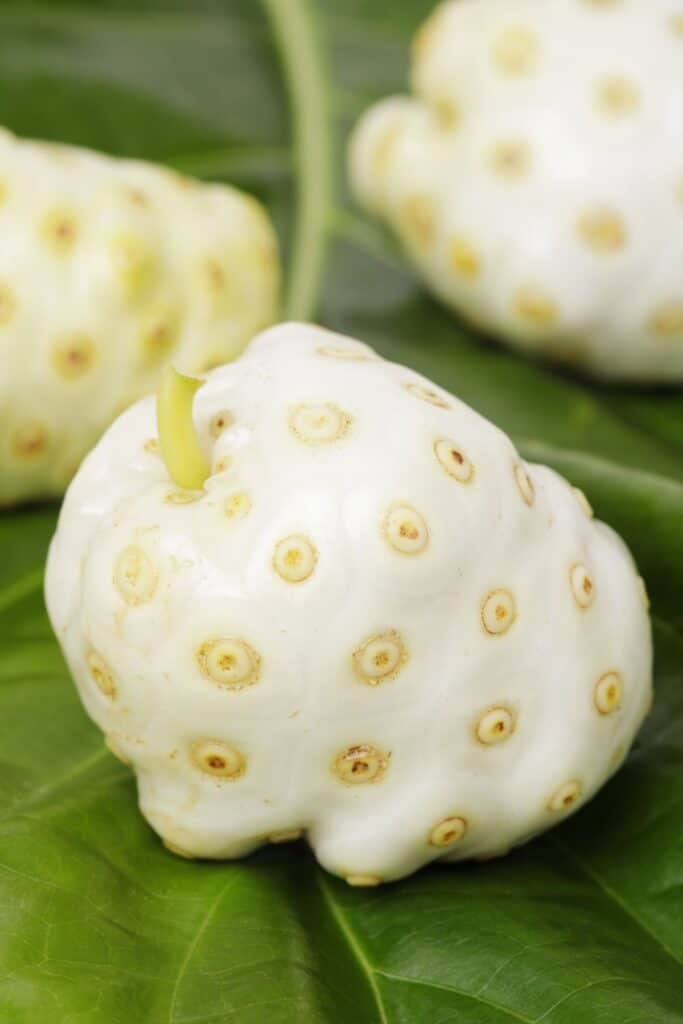
55. Pearl Goya Bitter Melon
White Pearl Bitter Melon is a rare hybrid species of bitter melon that is prized for its pure white, bumpy-warted skin resembling white pearls. It is native to the island of Okinawa, Japan, and its flavor is milder than green bitter melon and even boasts umami flavor notes.
56. Rollinia
This fruit is round and yellow on the outside with dark brown spikes and, when cut open, reveals a white creamy center with black seeds. They are native to the Americas, and indigenous species are found across North America, South America, and Central America.
57. Rosa Bianca Eggplant
The Rosa Bianca eggplant has a beautiful purple and white mixed outer skin and a pure white center. It is native to Sicily, Italy, and has a mild flavor that complements tomatoes and chees perfectly.
58. Satsuma Long Eggplant
The satsuma long eggplant is long in shape and has a green outer skin and a white center. They are native to Japan and have a sweet, buttery eggplant flavor. They are an excellent source of fiber and vitamin C and can help strengthen the immune system.
59. Snake Fruit
This unique fruit has rich brown outer skin and beautiful creamy white segments on the inside. It is native to Indonesia but is now grown and produced around southeast Asia. When properly ripened, snake fruit is dry and crunchy, with a taste similar to a bitter pineapple or jackfruit.
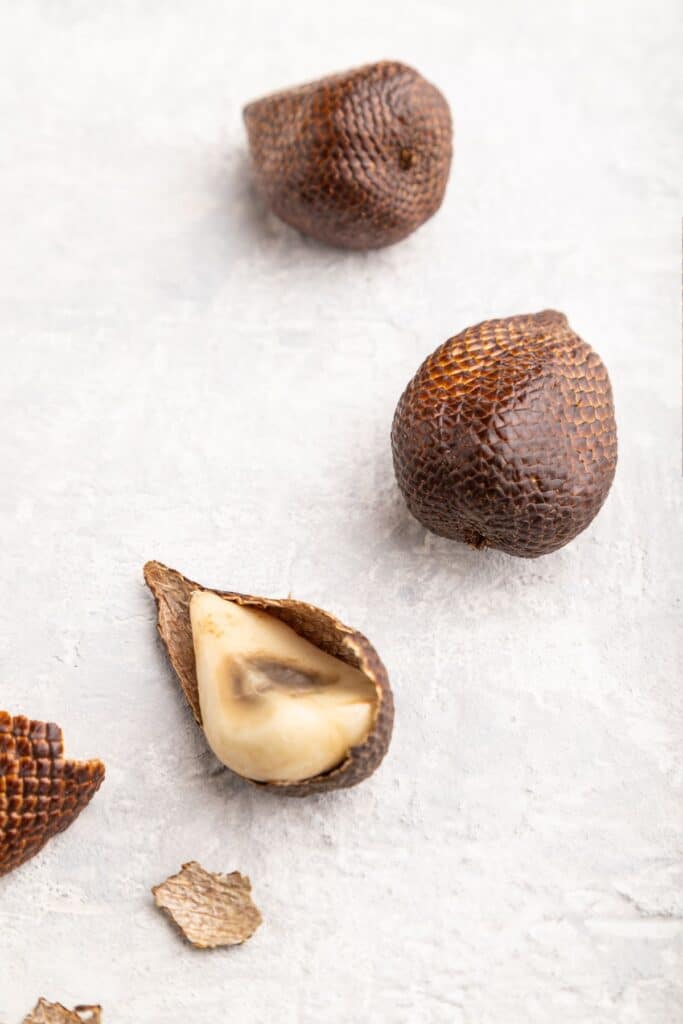
60. Snowball Tomato
The snowball tomato is a rare heirloom tomato with a stunning white outer skin with a slight yellow tinge to its center. It is an ancient variety from the United States and has a sweet, citrus taste that is richer and more complex than many white types.
61. Sugar Apple (Sweetsop)
The sugar apple is a heart-shaped fruit, its outer surface is thick, hard, and covered in scaley greenish skin, and its juicy inner flesh is a whitish-yellow color. Its tree is native to the West Indies and South America. It tastes very much like fragrant, creamy custard, and some people describe its taste as a mix of sweet tropical fruits, mint, and cinnamon.
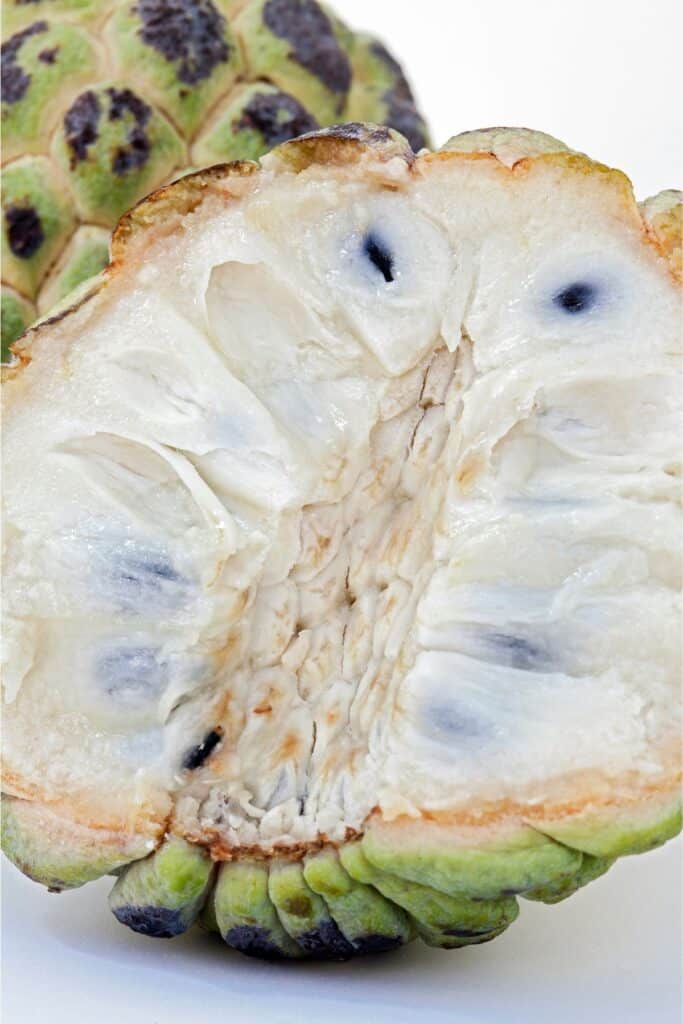
62. Sweet Dumpling Squash
The sweet dumpling squash has a white and dark green striped outer skin and a vibrant orange center. It was first developed in 1976 by Sakata Seed Corporation of Yokohama, Japan. It has a sweet, nutty flavor and a smooth, creamy texture, so is great in soups and stews.
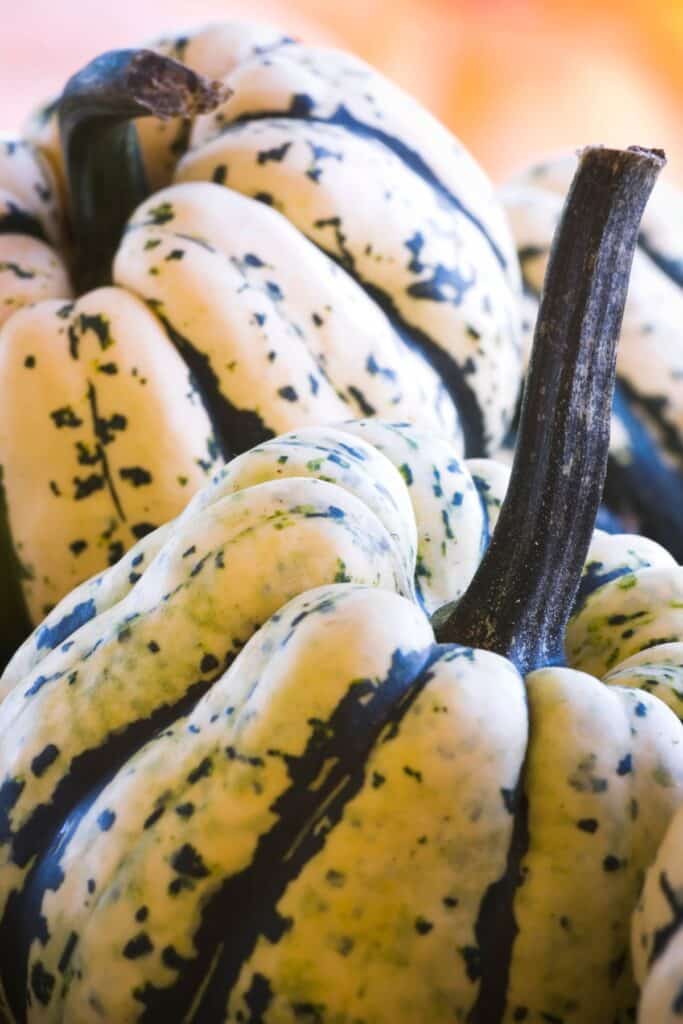
63. Taro
Taro is a root vegetable with an orangy brown outer skin and a pure white center. It is said to have probably originated in Southeast Asia or Southern Asia. Some people describe taro as being similar to a sweet potato, with its flesh slightly sweet and slightly nutty.
Speaking of taro, you should 100% make this Taro Milk Tea recipe.
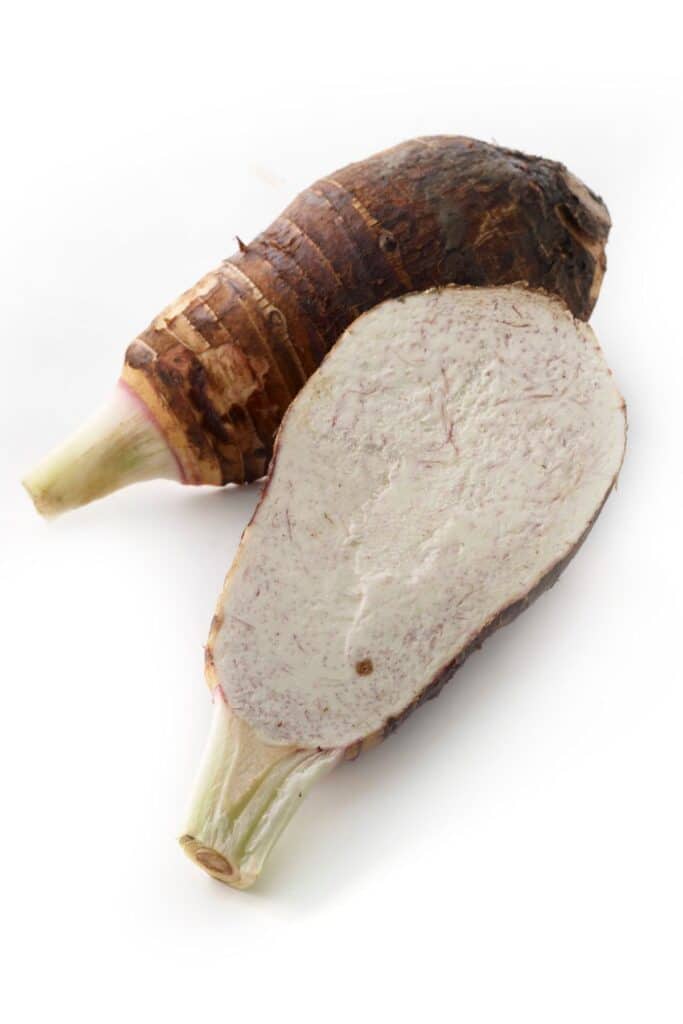
64. Tigger Melon
The trigger melon has a beautiful, vibrant yellow and orange striped outer skin and a pure white center. Tigger melons are believed by experts to be native to Armenia, and the flavor is rather mild and rarely sweet, even though their scent would suggest otherwise.
65. White Currant Tomato
The white currant tomato is creamy-white in color with just a tinge of yellow. This indeterminate, regular-leaf currant tomato was originally from South America and is one of the most unique and sweetest-tasting tomato varieties known.
66. White Guava
White guavas have a round, oval shape, vibrant green outer skin, and a pure white center. They are native to South America and have been growing wild since ancient times. Their white flesh is firm and juicy, with a lime-like sweetness and musky melon flavor.
Interested in more vibrant foods? Check out this post, 107 Foods That Are Purple.
67. White Lanshou Melon
The white-skinned, honeydew-type melon has thick, heavy, and sweet flesh that is rich in Vitamin C. This variety has been grown in Lanzhou, China since it was introduced there in the 1940s by U.S. Vice President Henry Wallace.
68. White Scallop Squash
Early white bush scallop squash is a variety of summer squash, more familiarly known as pattypan squash. It is a Native American heirloom grown by American Indians in the Northeast for hundreds of years. It is best eaten roasted with shallots to bring out its sweet and buttery flavor.
69. White Soul Alpine Strawberry
These Alpine strawberries are a natural mutation of the wild-growing redwood strawberry. Amazingly, these white strawberries taste like ripe pineapple! The white strawberry is the wild strawberry indigenous to Europe and can be eaten raw or cooked into desserts.
You could use these stunning strawberries in this Healthy Strawberry Oatmeal recipe
70. White Tomesol Tomato
This unique tomato is creamy white in color and has a sweet and rich taste. It was originally introduced to gardeners by Dorothy Beiswenger of Crookston, Minnesota via the Seed Savers Exchange’s 1998 annual yearbook. They can be eaten raw or cooked into dishes.
71. Yamato Silver Watermelon
This watermelon is high in quality and texture and has a similar light and dark striped outer skin to a regular watermelon but with a creamy white center. This snowy, silver-fleshed heirloom hails from Nara Prefecture, Japan. It is best enjoyed raw and has the taste of a sweet Asian pear with a hint of citrus and an overall creamy finish.
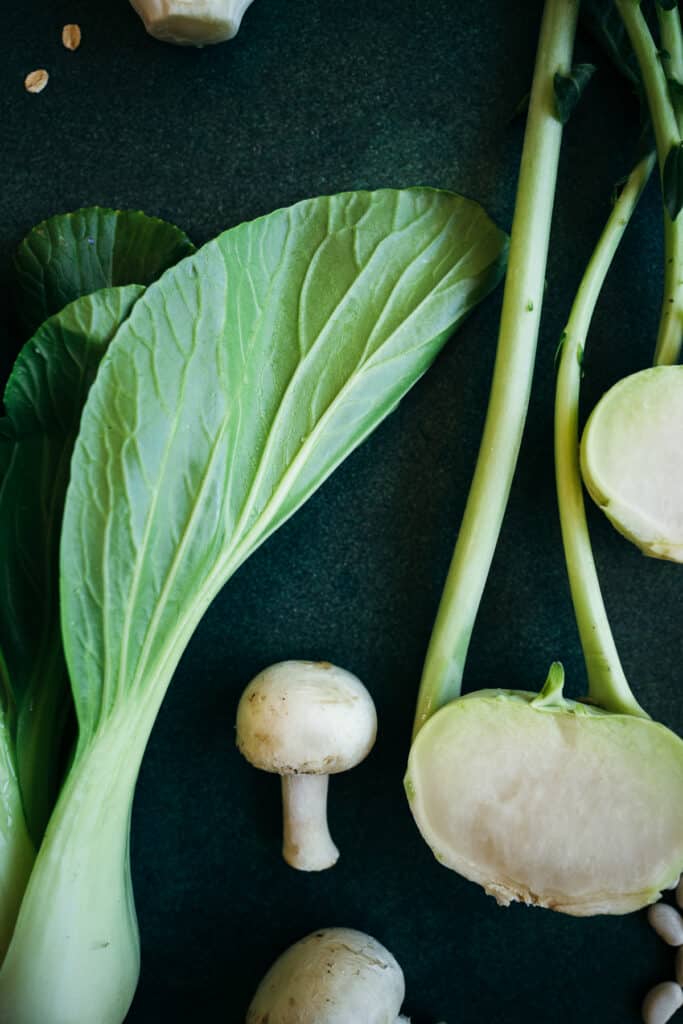
Beans That Are White
72. Alabama Blackeyed Butterbean
Technically a lima bean, this creamy white bean is traditionally grown in Alabama and referred to there as a butterbean. It has a small black-to-brown eye at the center and does well in extreme heat and drought conditions. These beans are also an excellent source of vitamins C, fiber, and iron.
73. Black-Eyed Peas
These tiny white beans with small black eyes are like the little brother to the Alabama butterbean. They are native to North America, and they have become a staple food across the Deep South of the United States.
Black-eyed peas have an earthy delicious served in a salad or soup and are a staple in Cowboy Caviar.
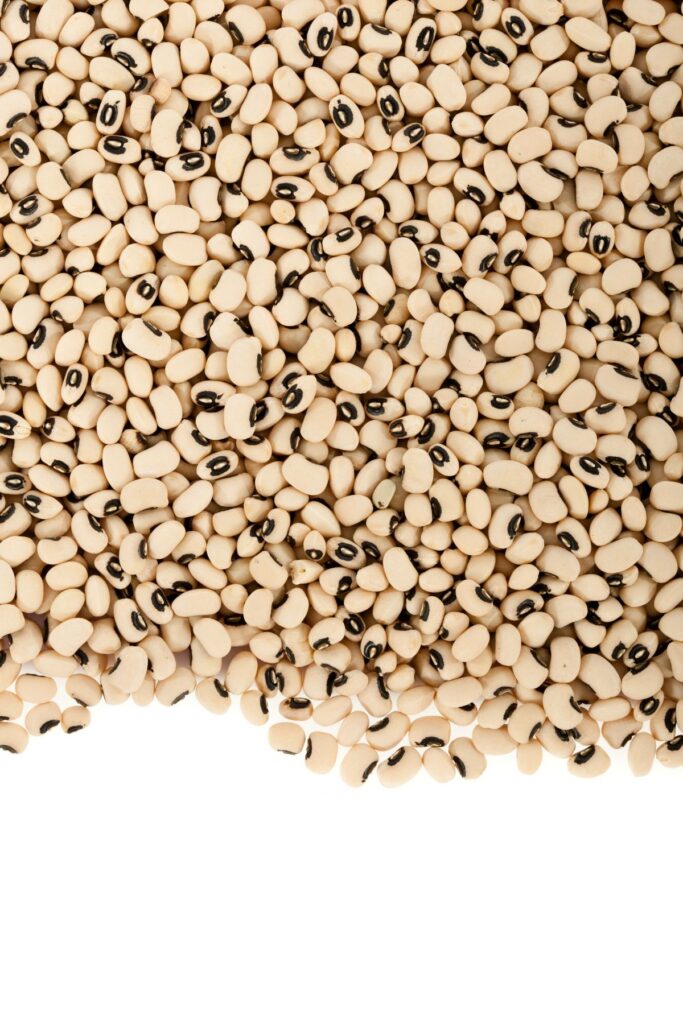
74. Cannellini Beans
This particular bean is pure creamy white in color and is shaped slightly like a kidney bean but with more squared edges. It was first developed in Argentina but is very popular in Southern Italy. Cannellini beans are rich in B vitamins, including vitamin B12.
75. Chickpeas
Chickpeas are also known as garbanzo beans. They range in color from white to black. Chickpeas are an excellent source of iron, fiber, and protein. They also contain a good amount of potassium and carbohydrates.
If you haven’t tried chickpeas before, you could make this tasty Hummus Recipe or Roasted Garlic Hummus.
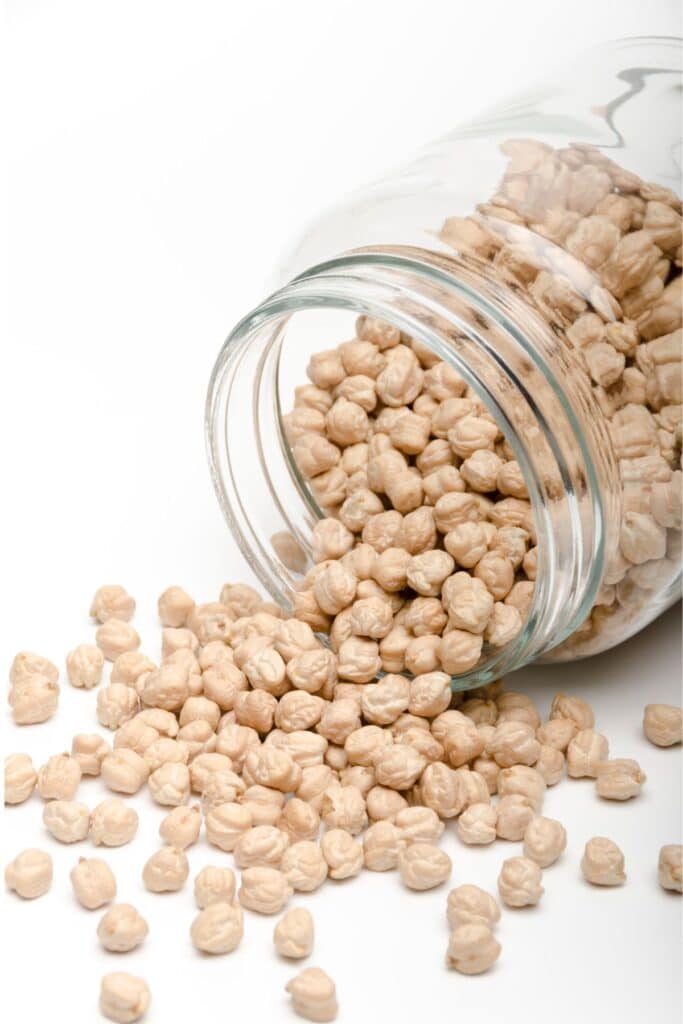
76. Good Mother Stallard Bean
These beans have a speckled maroon red and white outer skin and a white center. It originated in Wise County, Virginia; this variety dates to at least the 1930s. They have a creamy texture and a hearty and nutty flavor.
77. Great Northern Beans
These are white medium-sized beans a bit larger than a navy bean, most commonly used for making baked beans. They originated in Peru and spread throughout the Americas due to Spanish exploration. They have a mild nutty flavor and are great for soups and stews.
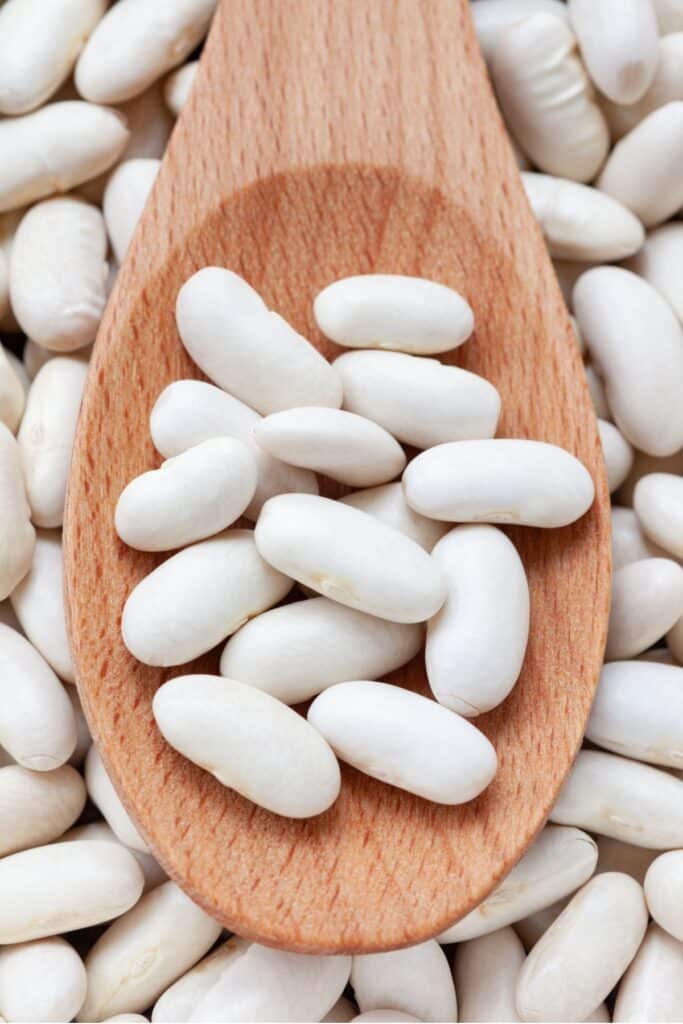
78. Indian Snake Bean
The Indian snake bean has vibrant green skin with a white center. While native to East and Southeast Asia, the snake bean probably originated in China. They have a sweet and crunchy texture and taste and are an excellent source of calcium and vitamins B6 and B12.
79. King of The Garden Lima Bean
This pure white, vigorous, vine-type lima bean variety clings well to poles and does not require staking to grow. The large-seeded beans were domesticated in South America, primarily near Peru. The small-seeded beans were domesticated in Mexico. They have a rich honey-like flavor, so can easily be enjoyed raw and fresh.
80. Navy Beans
The Navy bean, also known as the haricot bean, is creamy white in color and is a variety of the common bean native to the Americas, where it was first domesticated. They have a neutral, slightly nutty taste, and navy beans are adaptable to a variety of recipes, even desserts!
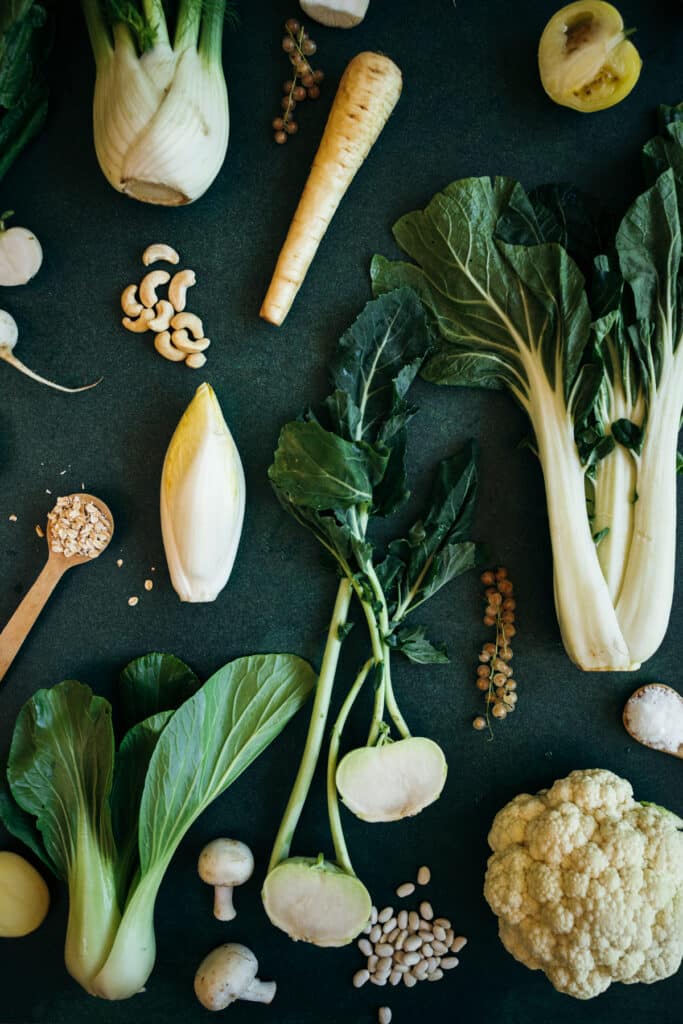
White Grains
Refined white grains include food items like white flour, rice, corn, and quinoa. Some of these options are healthier than others, but these types of grains are high in fiber, helping you feel full and satisfied. Here is a list of grains that are white in color.
81. Khorasan
Khorasan is an oriental type of wheat commercially known as Kamut. It is creamy white when growing in crops and a slightly light tan color when harvested into grains. Khorasan wheat is grown in Europe mainly for bread, and in the Iranian province of Khorasan as food for camels. It has a rich, nutty flavor and can be cooked in many ways.
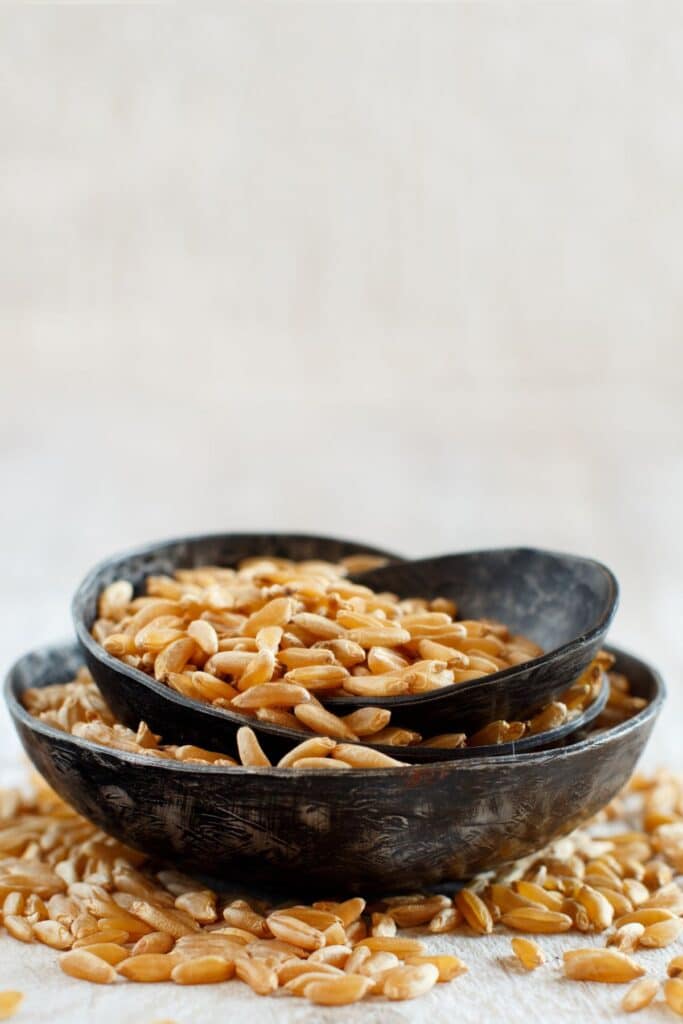
82. Long-Grain White Rice
The classic everyday long-grain rice is pure white in color and was cultivated in India and Pakistan. It is best eaten cooked and served with a stew or curry.
83. Montana Cudu Corn
This is a medium-sized white corn variety with small black specks. This beautiful spotted corn is descended from a historic Native American variety. It is best eaten cooked and enjoyed on its own or added to dishes.
84. Oats
The classic grain commonly used to make porridge is white and tan in color. The crop may have originated in Asia Minor, though it is now most extensively grown in Europe. It can be cooked in many different ways and milled into flour to use for baking.
I have oats for breakfast every day. They are so simple and quick with this 5-minute Creamy Oatmeal recipe.
Interested in more interesting foods? Check out this post, 50 Foods That Are Orange.
85. Short-Grain White Rice
This type of rice is plumper and shorter than regular long-grain white rice, it is pure white in color and also contains more starch. It originated in Japan and is the most commonly used rice in Japanese cuisine.
86. Sorghum
Sorghum, also known as millet or Indian millet, is a grass plant thought to have originated in Africa, where it has remained a major crop. It is white and light tan in color and is best eaten boiled with a dash of salt.
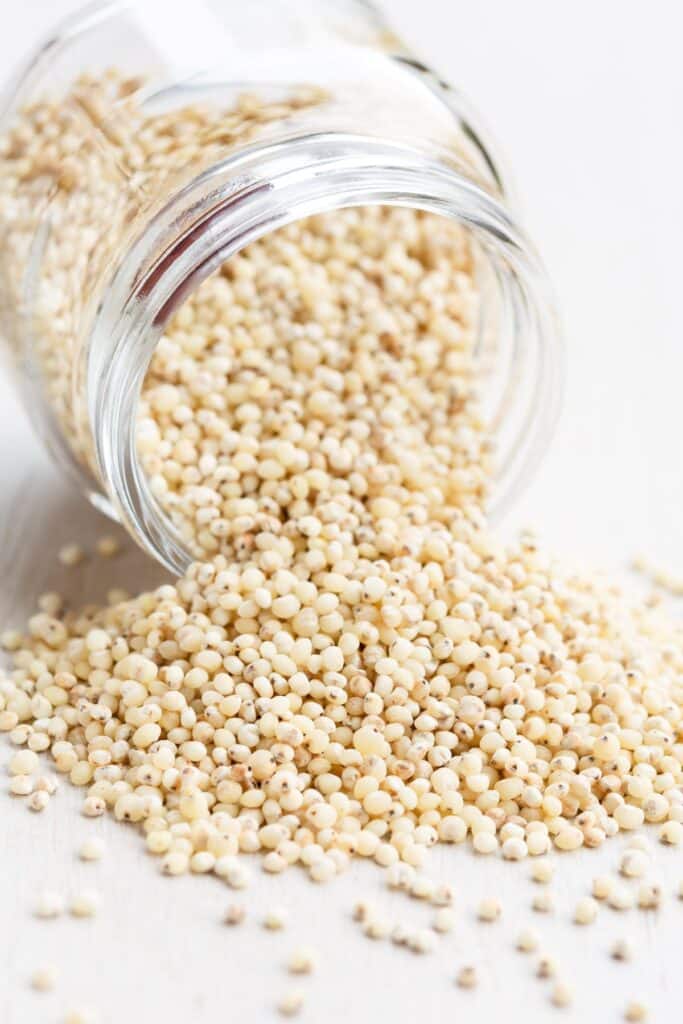
87. Sticky Rice
Also known as glutinous rice, it is a sticky, waxy rice that is pure white in color. Sticky rice has been growing in mainland Southeast Asia for at least 4,000 years. It has a taste that is subtly sweeter than other types of rice, and amylopectin is responsible for the sticky quality of glutinous rice.
88. Stowell’s Evergreen Sweet Corn
This variety of corn has creamy white kernels and is one of the oldest corn varieties in existence, dating back to the mid-1800s. First bred by Nathan Stowell of Burlington, New Jersey, in 1848. It is best eaten cooked on its own or added to dishes.
89. White Basmati Rice
This is a type of white rice that is more aromatic than regular plain rice. It was originally cultivated and grown in India and Pakistan. It is best eaten cooked and paired with stews or curries.
90. White Bulgur
This grain mostly comes from the yellowish bulgar wheat grain, but it is creamy white in color. The process of making bulgur from wheat is an ancient that originated in the Anatolia region of modern-day Turkey, the Middle East, and the Mediterranean. It has a nutty and earthy taste and is best enjoyed when added to salads or paired with stews.
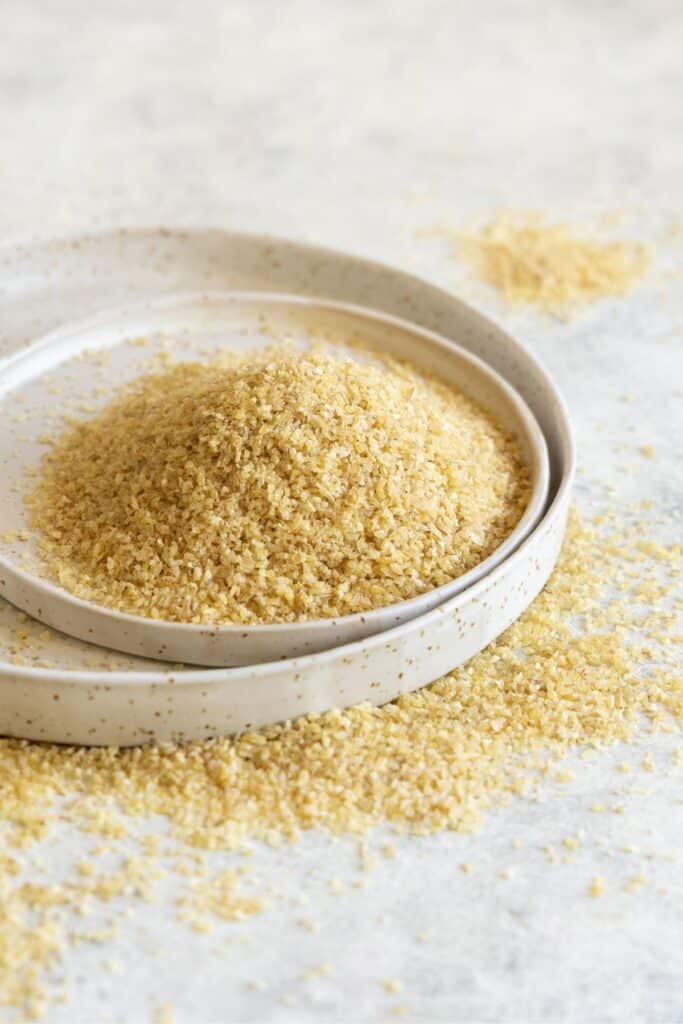
91. White Jasmine Rice
Jasmine rice is a long-grain variety of fragrant rice that is pure white in color. It is traditionally grown in the humid climate of Thailand and other Eastern Asian countries, where it is often used in pad Thai and fried rice dishes.
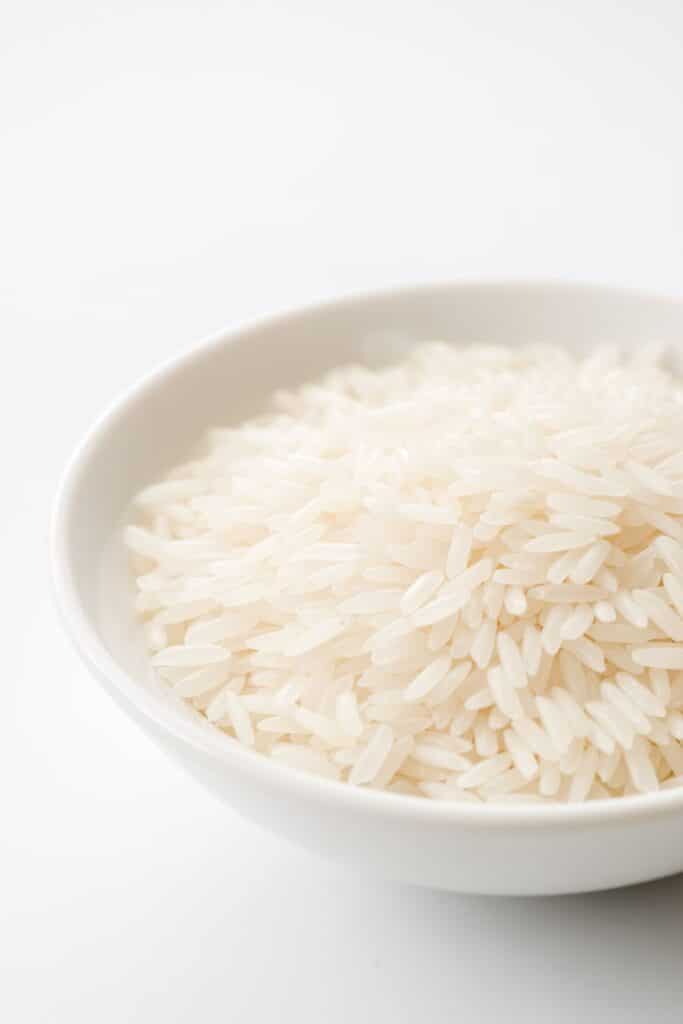
92. White Quinoa
This is the most common variety of quinoa found in markets; it is white and slightly tan in color. The plant has been cultivated for about 5000 years and is indigenous to the Andean region of South America, specifically Bolivia, Ecuador, Chile, and Peru. It is best enjoyed cooked and added to salads or stews and is an excellent source of plant-based protein.
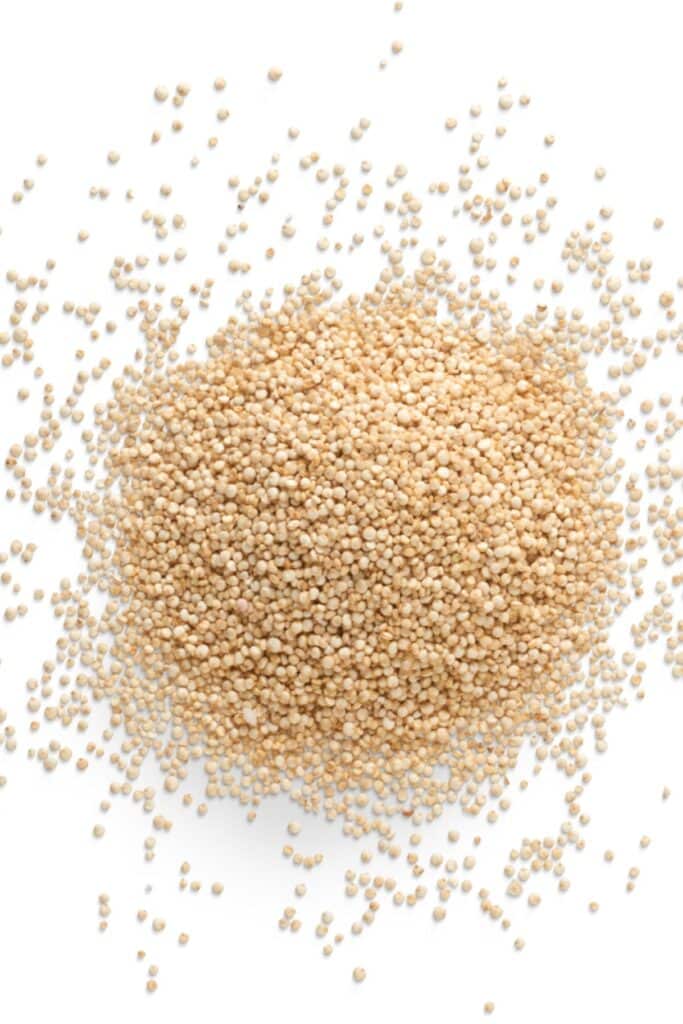
93. White Wheat
White wheat is a different type of wheat that has no major genes for bran color, so it is pure white. The archaeological record suggests that wheat was first cultivated in the regions of the Fertile Crescent around 9600 BCE. It is best eaten when used in recipes to make baked goods or bread.
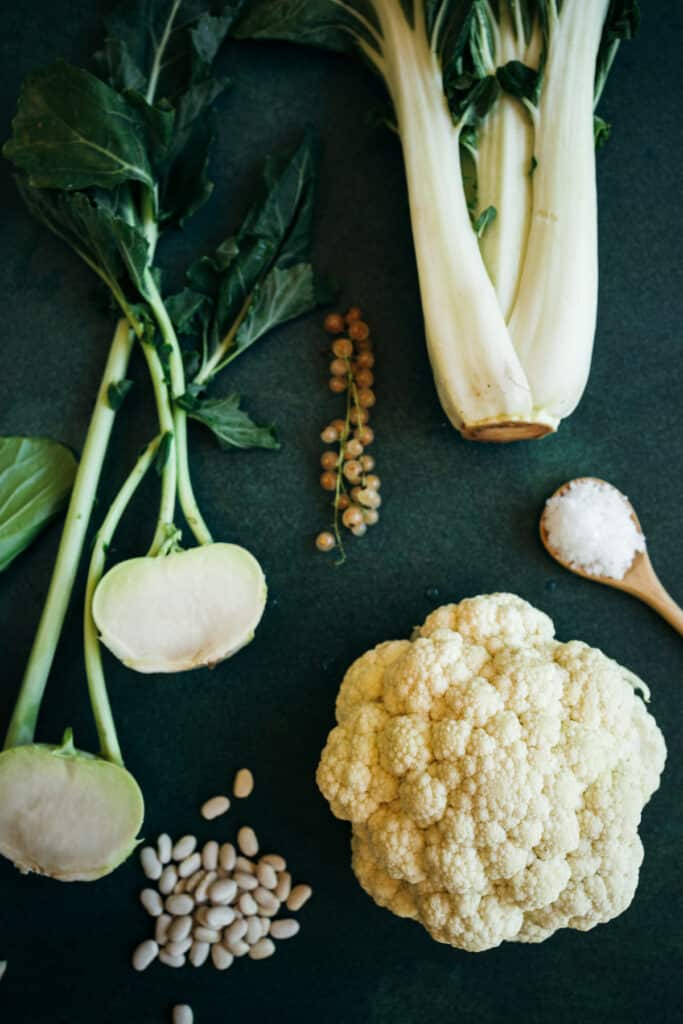
White Nuts And Seeds
94. Brazil Nut
Brazil nuts have a mix of white and brown outer skin and are white on the inside. They come from the South American tree in the family Lecythidaceae, and they are an excellent source of selenium and hold powerful antioxidant properties.
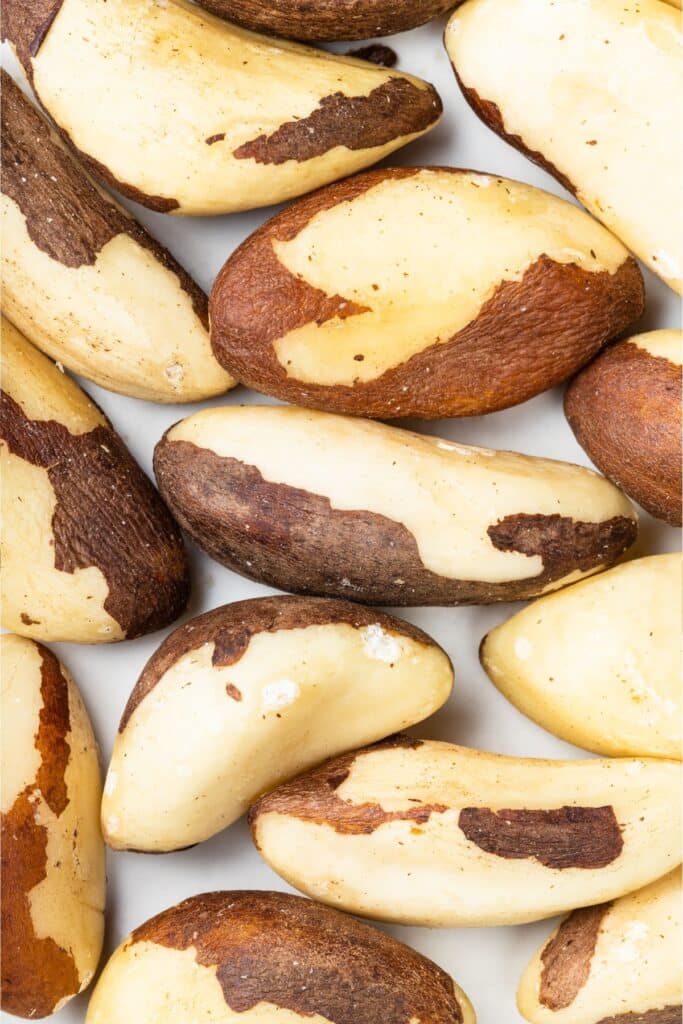
95. Cashew Nut
This creamy kidney bean-shaped nut is white on the inside with a slight golden tan color on the outside. The cashew originated in Brazil but is now cultivated extensively in all tropical areas, notably in India and East Africa. They are rich in plant protein, dietary fiber, and healthy fats.
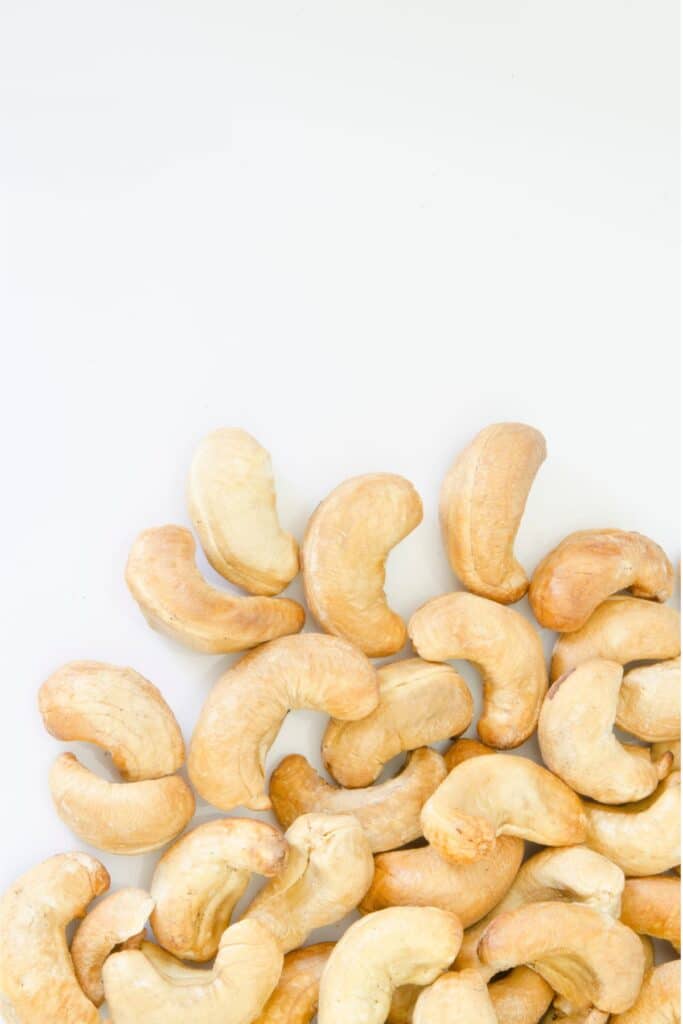
96. Macadamia Nut
This delicious nut has a brown acorn-like shell and a creamy white center. Although a majority of the world’s cultivated macadamias are grown in Hawaii, most of the World’s Macadamias May Have Originated From a Single Australian Tree. They have a sweet and buttery flavor and are rich in healthy fats.
97. Pine Nuts
This white and tan colored nut is native to the United States, although other pines with edible pine nuts are native to Europe and Asia, like the European stone pine and the Asian Korean pine. They have a soft and nutty flavor with an undercurrent of sweetness and are most popularly used as the main ingredient in pesto sauces for pasta.
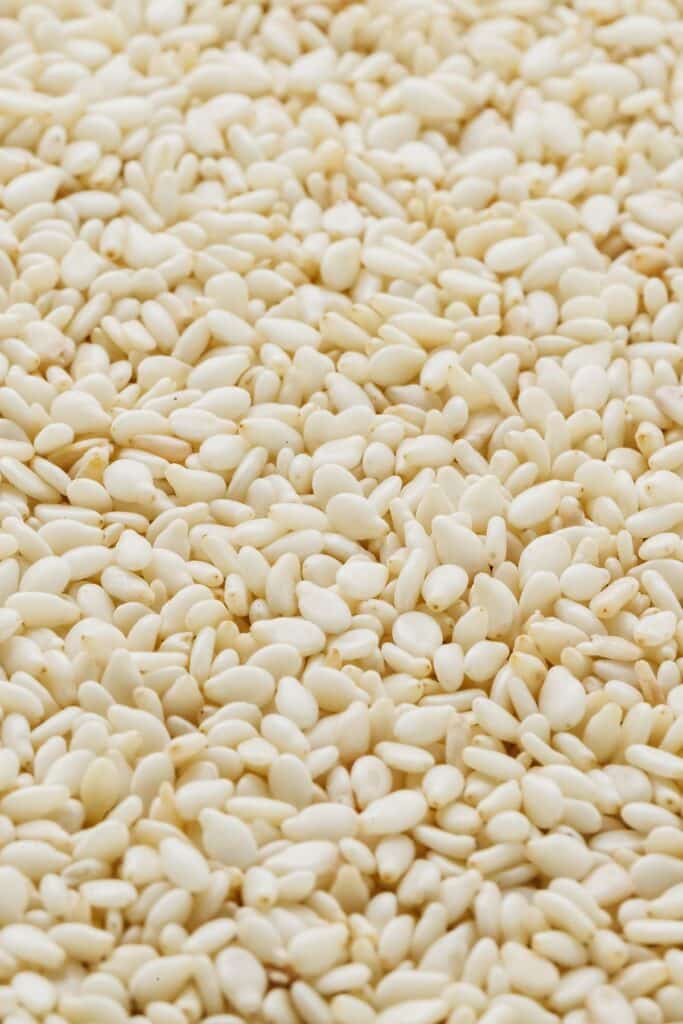
98. Pumpkin Seeds
You may think that these seeds are more so dark green in color when you find them in a packet on the supermarket shelves, but when sourced straight from the pumpkin itself, they are pure white in color. They are native to the Americas, and indigenous species are found across North America, South America, and Central America.
99. White Sesame Seeds
Hulled sesame seeds have an off-white color and come from the Sesamum Indicum plant.
They are a great source of healthy fats, protein, and vitamin B and are best eaten sprinkled over rice dishes or salads. You can enjoy them as part of this Tahini Chocolate Date Ball recipe.
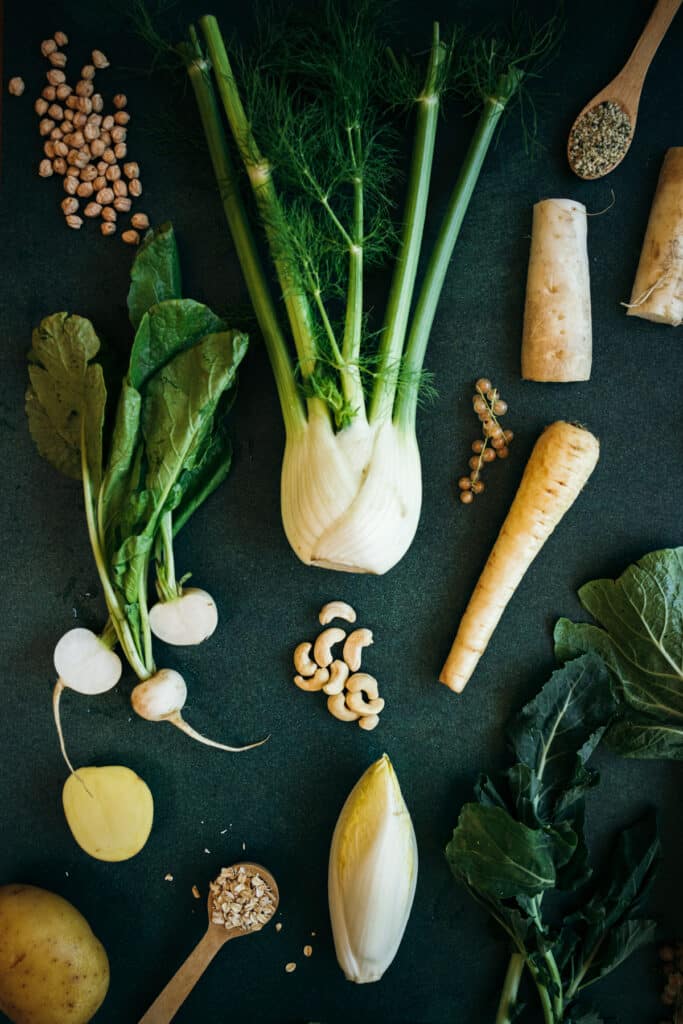
Edible White Mushrooms
100. Button Mushroom
Button mushrooms are the immature form of the edible fungus Agaricus bisporus that is pure white in color. It was first cultivated on horse manure heaps in France in the 1700s. They have a mild flavor and can be eaten raw or best enjoyed grilled or sauteed.
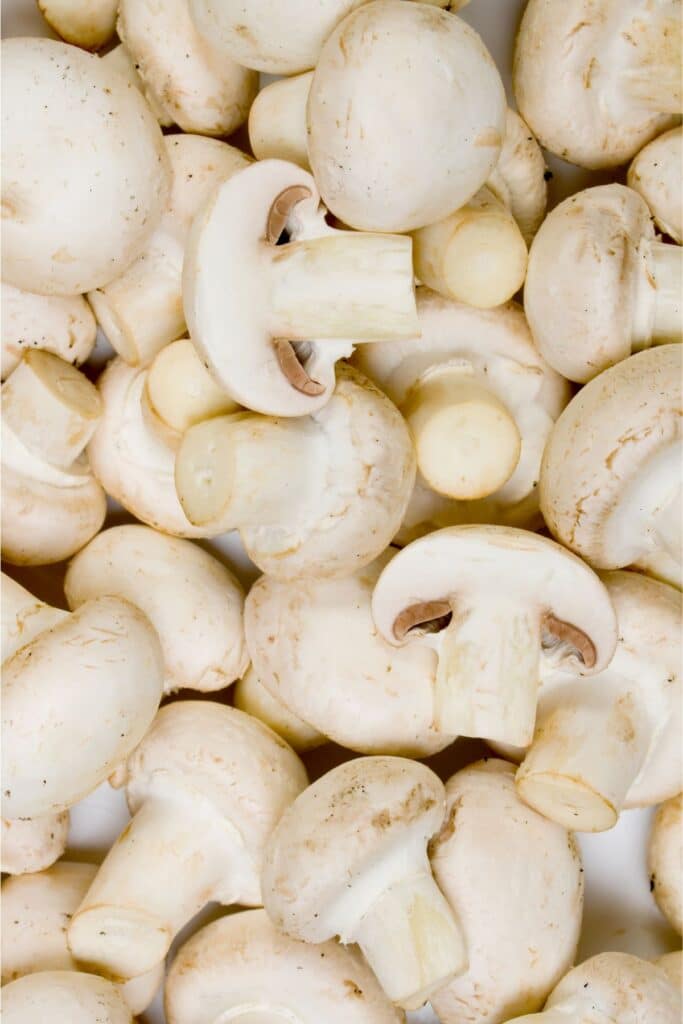
101. Cauliflower Mushroom
The cauliflower mushroom can be described as similar to a sea sponge, a brain, or a head of cauliflower, from which it has been given its name. Its flexible surface ranges in color from ivory, and pale yellow, to white. It is found around the world in forests of North America, Asia, and Europe. The cauliflower mushroom has a hazelnut taste and a chewy texture.
102. Enoki Mushroom
The Enoki mushroom is a long thin mushroom with a small head. They are pure white in color and have a mild flavor. Enoki mushrooms were first cultivated in Japan, and then they slowly started being cultivated all around North America and East Asia. It is best eaten cooked in dishes.
Interested in more interesting foods? Check out this post, 112 Fruits That Are Green.
103. Field Mushroom
The field mushroom is white in color and closely related to the classic button mushroom. It dates to ancient times and originated in India before becoming popular in other Asian countries. They are best enjoyed pan-fried in garlic or added to stews.
104. King Oyster Mushroom
The king oyster is the largest of all oyster mushrooms. They grow individually with thick and meaty white stems and tan-colored caps. It is native to the Mediterranean regions of Europe, the Middle East, and North Africa, but has also grown in many parts of Asia. They are best enjoyed in stir-fries or roasted in the oven.
105. Lion’s Mane Mushroom
This unique mushroom is pure white in color and is a globe-shaped fungus that has long, shaggy spines. It originated in Asia, Europe, and parts of Northern America, and research has found that the lion’s mane may protect against dementia, reduce mild symptoms of anxiety and depression, and help repair nerve damage.
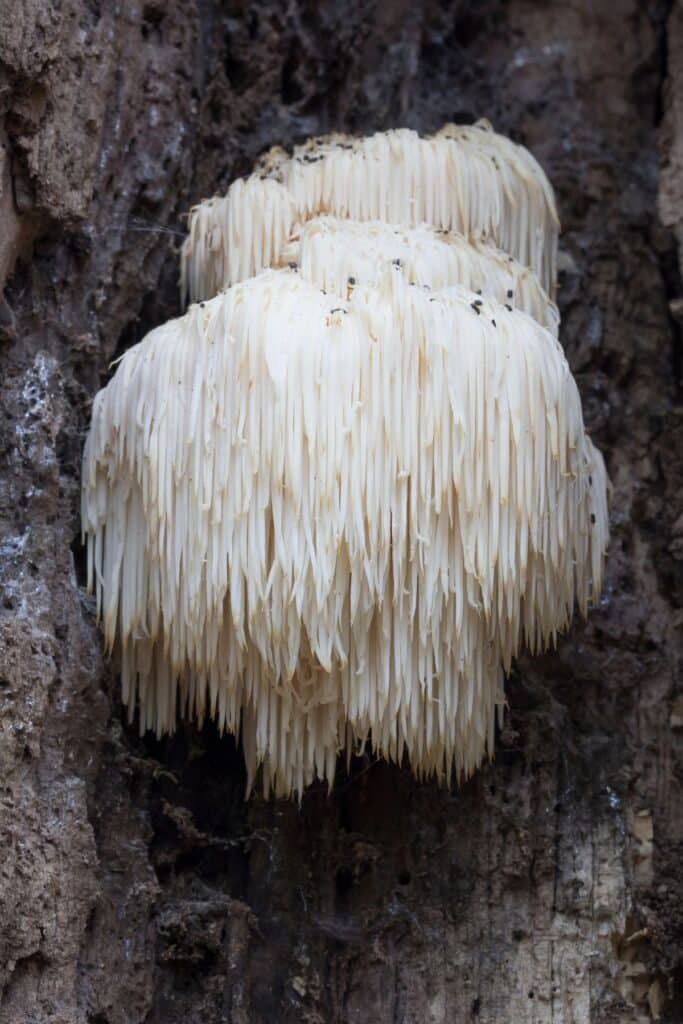
106. Oyster Mushroom
The mushroom has a broad, fan or oyster-shaped cap spanning 5–25 cm; natural specimens range from white to gray or tan to dark brown. It was first cultivated in Germany as a subsistence measure during World War I and is now grown commercially around the world for food. They have a subtle seafood flavor with hints of anise and a faint, earthy taste. They are also an excellent source of protein and vitamin B.
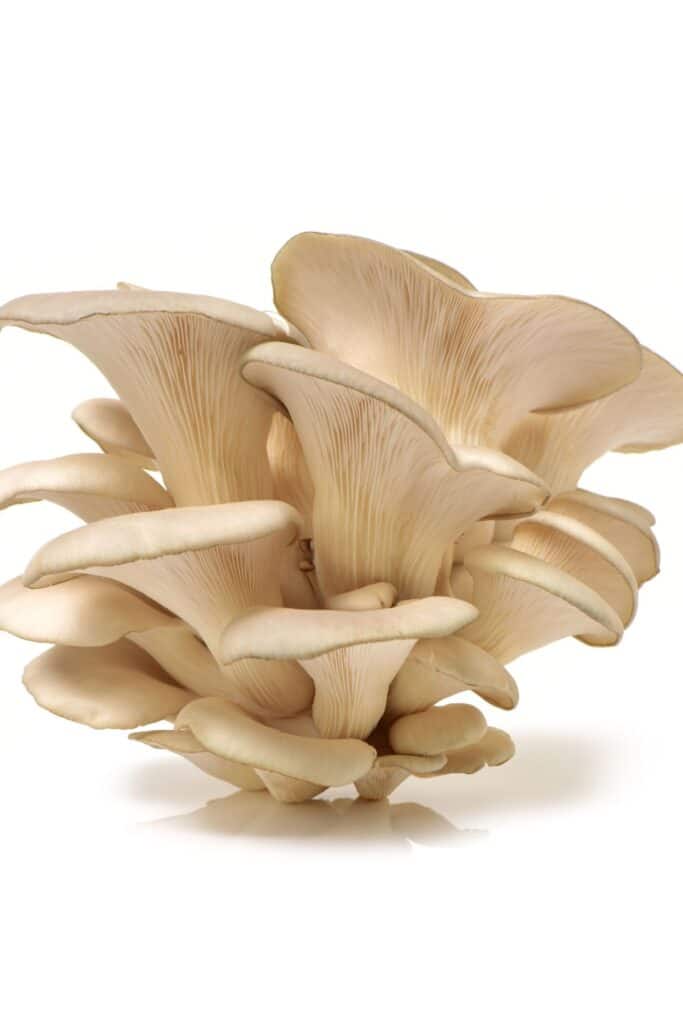
107. Straw Mushroom
The straw mushroom is a smaller white mushroom similar in shape to the button mushroom, which is an edible species cultivated throughout East and Southeast Asia. They can be found fresh or sometimes canned or dried and are best enjoyed when added to stir-fries and stews.
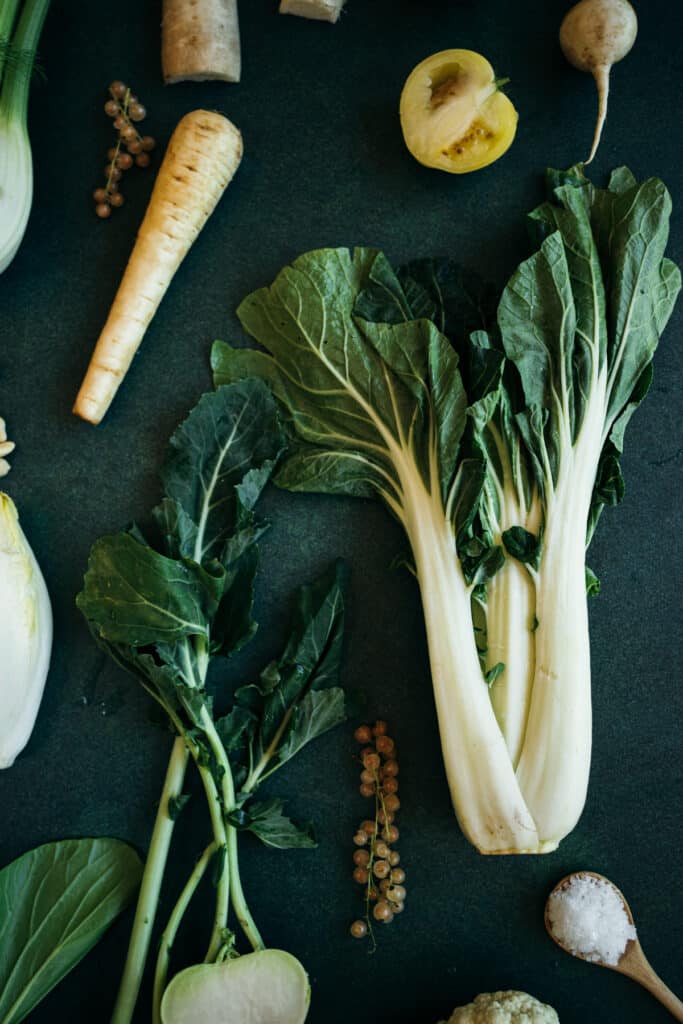
Salt
The number one item that is pretty much added to each and every recipe is salt! This white food ingredient that’s formed from sodium and chloride does the best job of bringing out the flavor in all types of cooking.
108. Flake Salt
Flake salt is a common category of white salt distinguished by the unique, flattened shape of flaked salt crystals. It can occur naturally but is also produced by using methods such as boiling brine over metal salt pans or evaporating it in greenhouse solar evaporators.
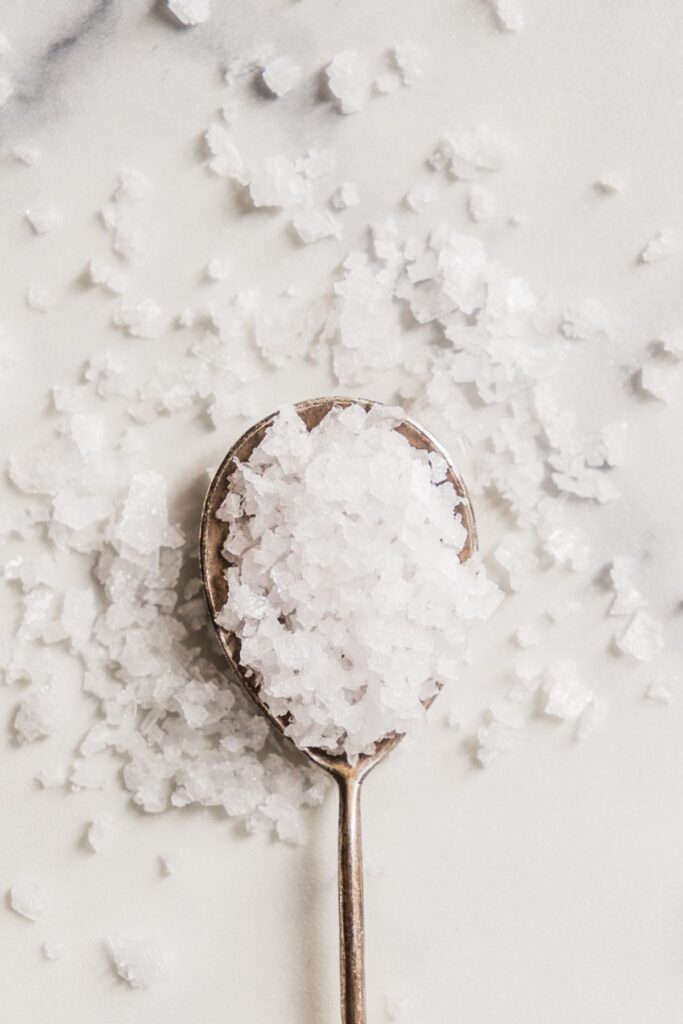
109. Sea Salt
Sea salt is the white salt produced by seawater’s evaporation. Ocean salt primarily comes from rocks on land and openings in the seafloor. Salt in the ocean comes from two sources: runoff from the land and openings in the seafloor. It is most commonly used to add and bring out flavor in all forms of cooking.
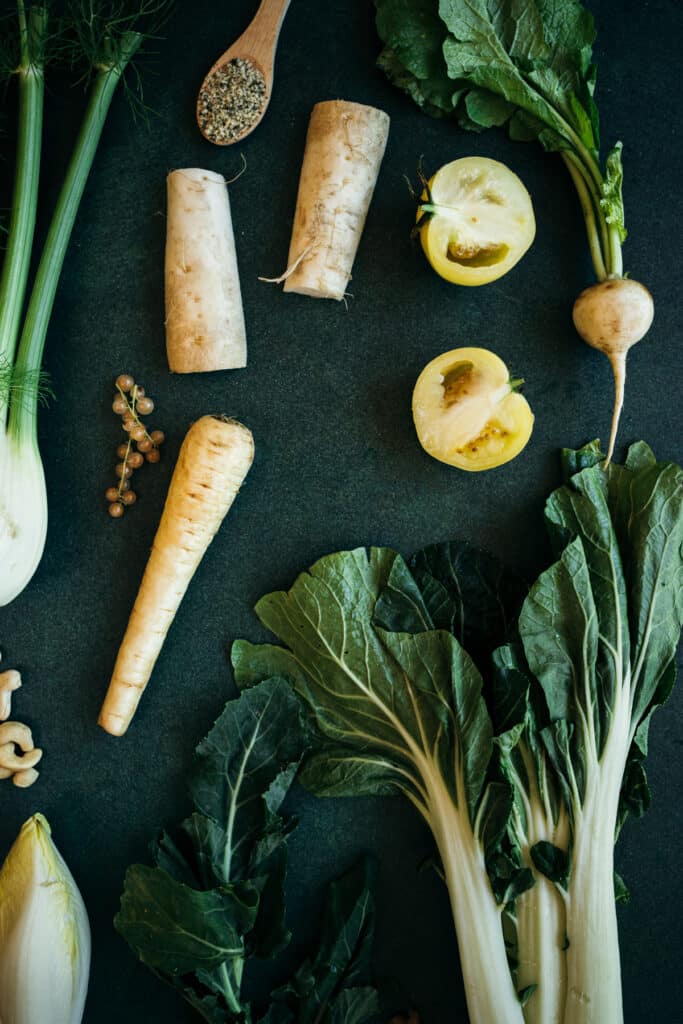
Edible White Flowers
The list below contains white edible flowers. While all of these are edible, some of these varieties are mainly used for external use in ointments because of their medicinal properties
110. Chamomile
Chamomile or camomile is the common name for several daisy-like plants of the family Asteraceae. It has pure white petals and a yellow center and is native to Europe, Africa, and Asia. It is best consumed as an herbal tea but is also commonly used in soaps and ointments for its medicinal properties proven to help treat inflammation.
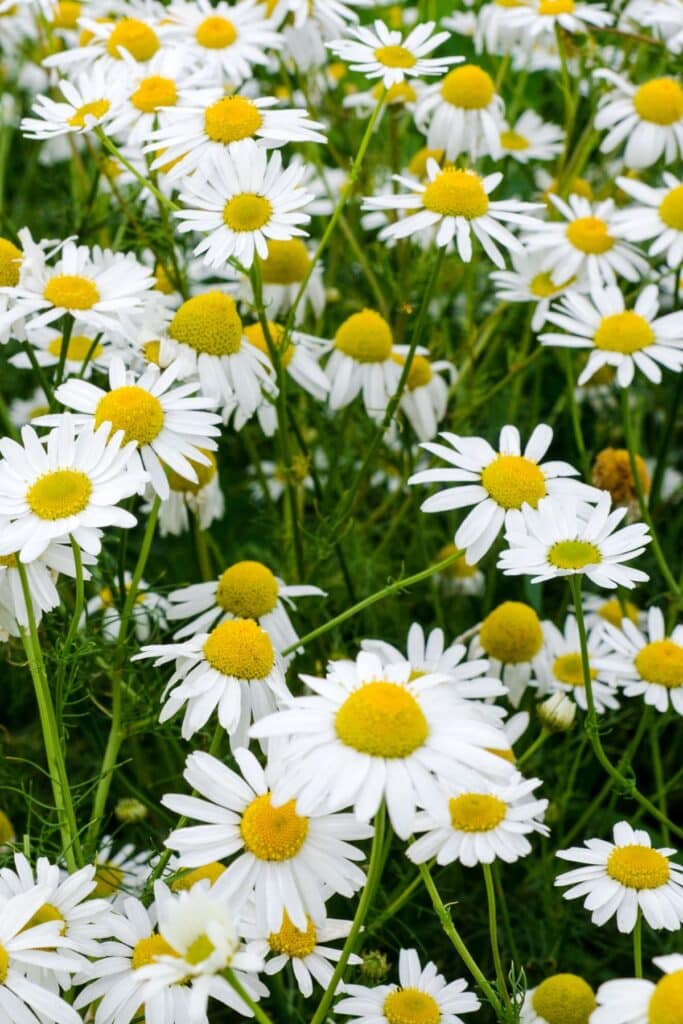
111. Double Diamond Pearl Yarrow
Pearl Yarrow blooms with showy, 3/4 inch across, fully-double, pompon-like, pure-white flowers that are very attractive to bees and butterflies. Its country of origin is Texas in the United States, and it is best known as a medicinal plant but has a number of edible uses.
112. Japanese White Dandelion
This is a beautiful white-flowered member of the dandelion family. This species is specifically found growing wild in southern Japan. Every part of a dandelion can be eaten. The roots, leaves, and stems are all edible and also have medicinal properties. Dandelions are highly nutritious. They are rich in vitamins (A, C, D, E, and B), inositol, and lecithin.
113. Polar Bear Zinnia
Another lovely variety with large, double-flowered, white Dahlia-like blooms. They are native to southern North America and South America. The flowers are edible, and the petals can be sprinkled onto salads and other dishes to provide some interesting color.
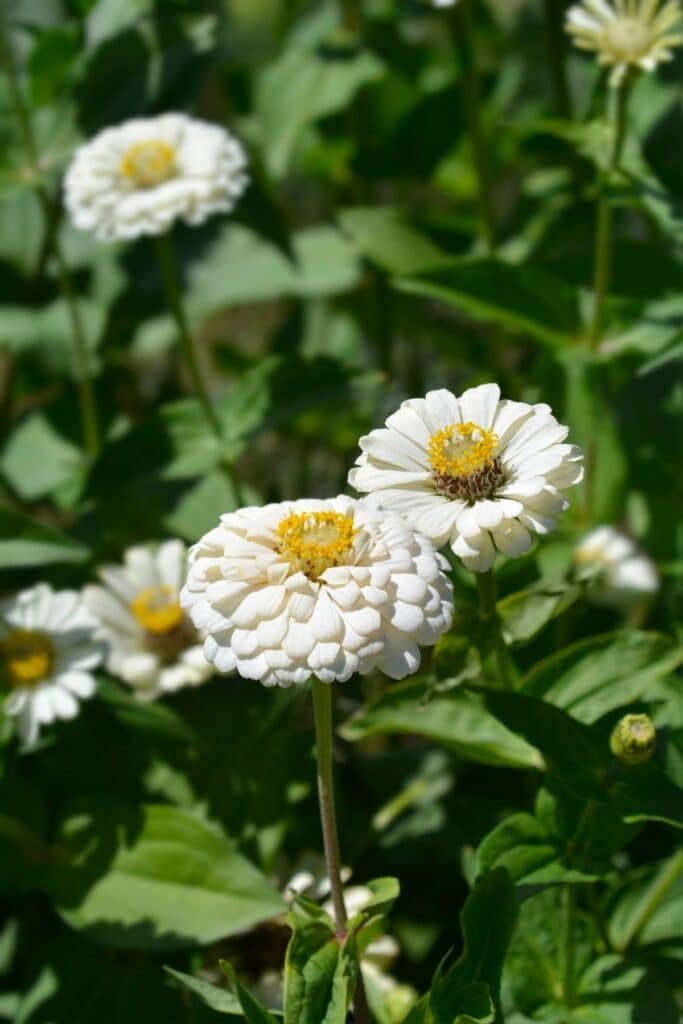
114. Snow Princess Calendula
The calendula’ Snow Princess’ has pale, creamy white double flowers, some with dark centers and some with yellow centers. Botanical studies suggest that it originated in the Mediterranean region. This flower is not so much used to eat but used in tinctures and ointments as it has been shown to treat skin inflammation, cuts, bruises, and infections very well.
115. White Borage
Rarely seen is this lovely variety with sprays of delightful white flowers. Borage is native to the eastern Mediterranean region and is cultivated in various parts of Europe, Great Britain, and North America. The young leaves of this plant have a cucumber-like flavor and can be added to many recipes.
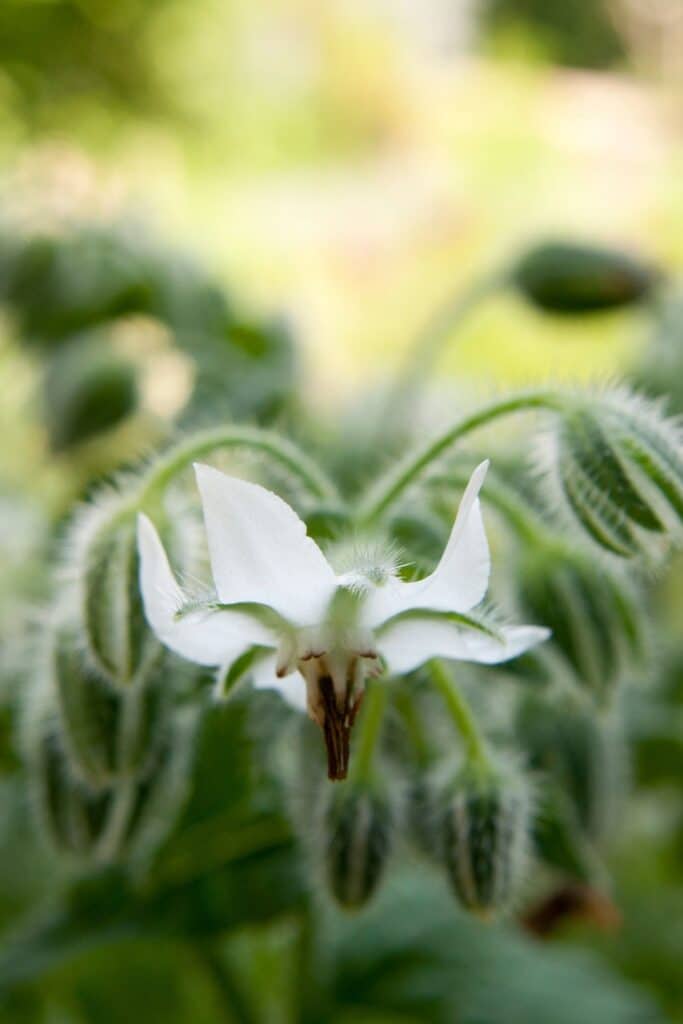
Prepared White Foods
Prepared white foods most likely have some sort of processing or refinement done to them. This might be taking whole foods and turning them into something else. For example, taking a white nut or seed and turning it into plant-based milk. Alternatively, it could be taking several ingredients to make a more processed food like vegan mayonnaise or yogurt. Finally, combining whole foods ingredients could make a tasty homemade recipe.
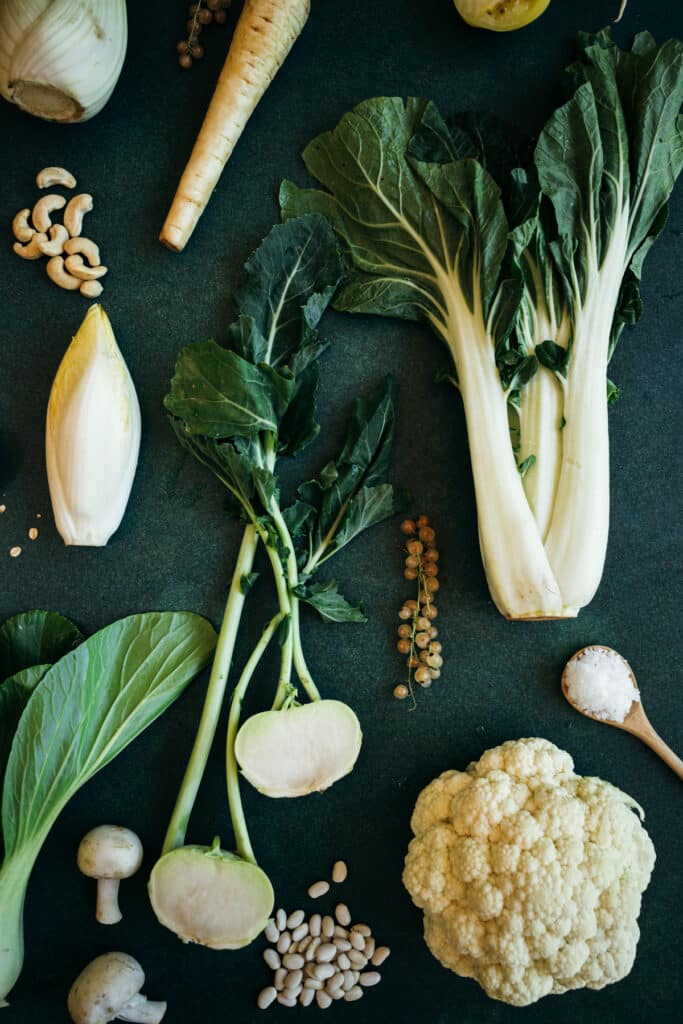
116. Cashew Milk
117. Coconut Milk
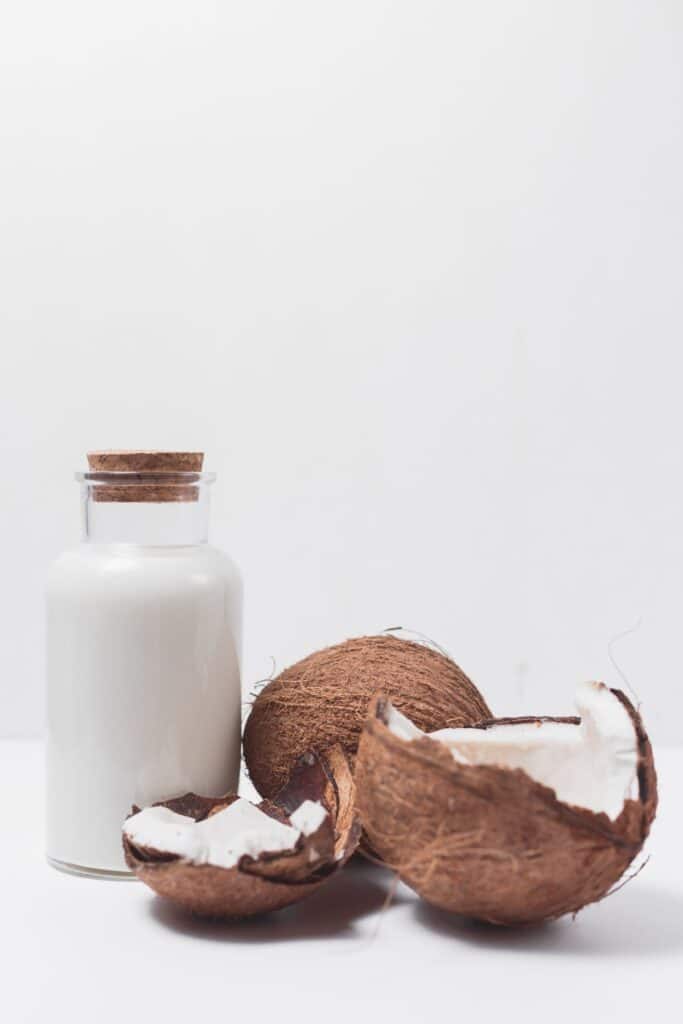
118. Flaxseed Milk
119. Hemp Milk
120. Macadamia Milk
121. Mashed Potatoes
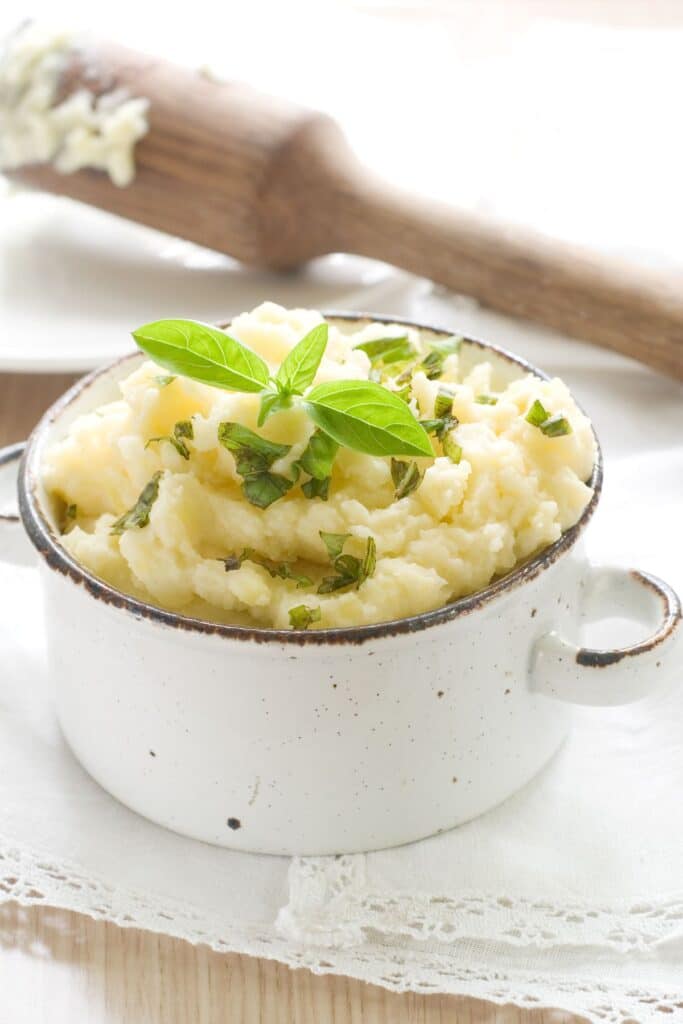
122. Oat Milk
Try oat milk in this Oolong Milk Tea recipe!
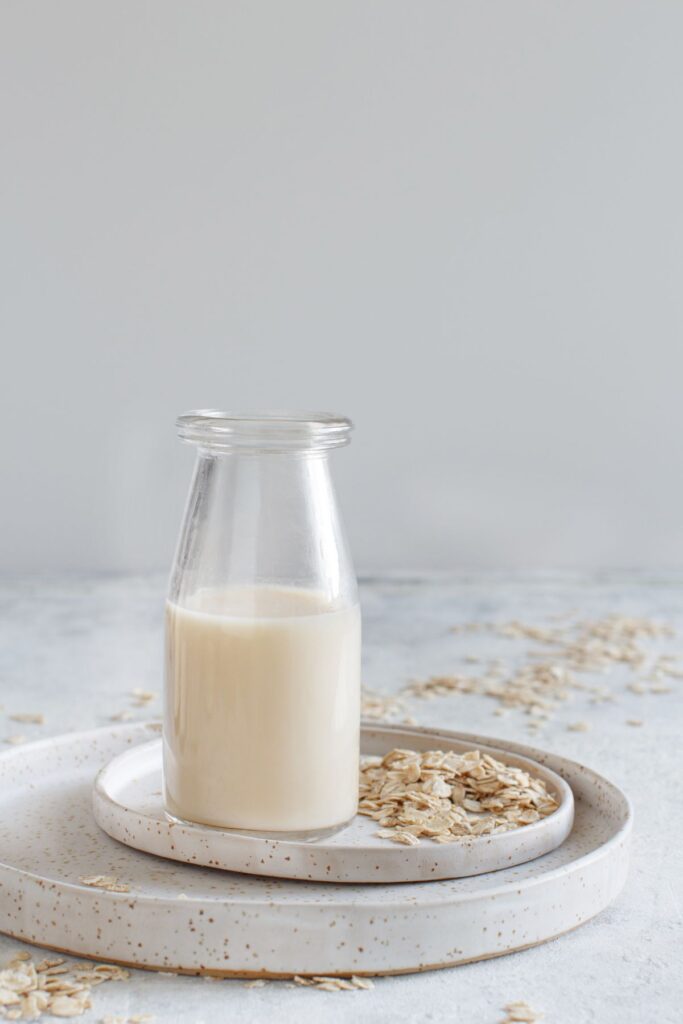
123. Vegan Yogurt (Plain Yogurt or Greek Yogurt)
124. Popcorn
Here is an incredible Garlic Rosemary Popcorn Seasoning recipe! (You’re welcome.)
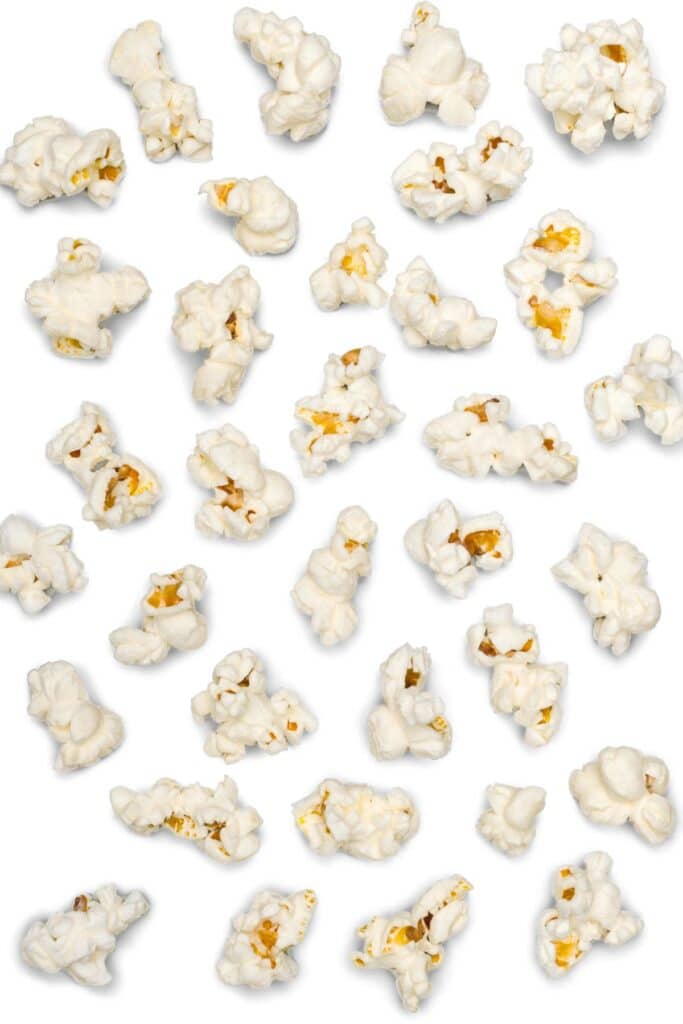
125. Potato Leek Soup
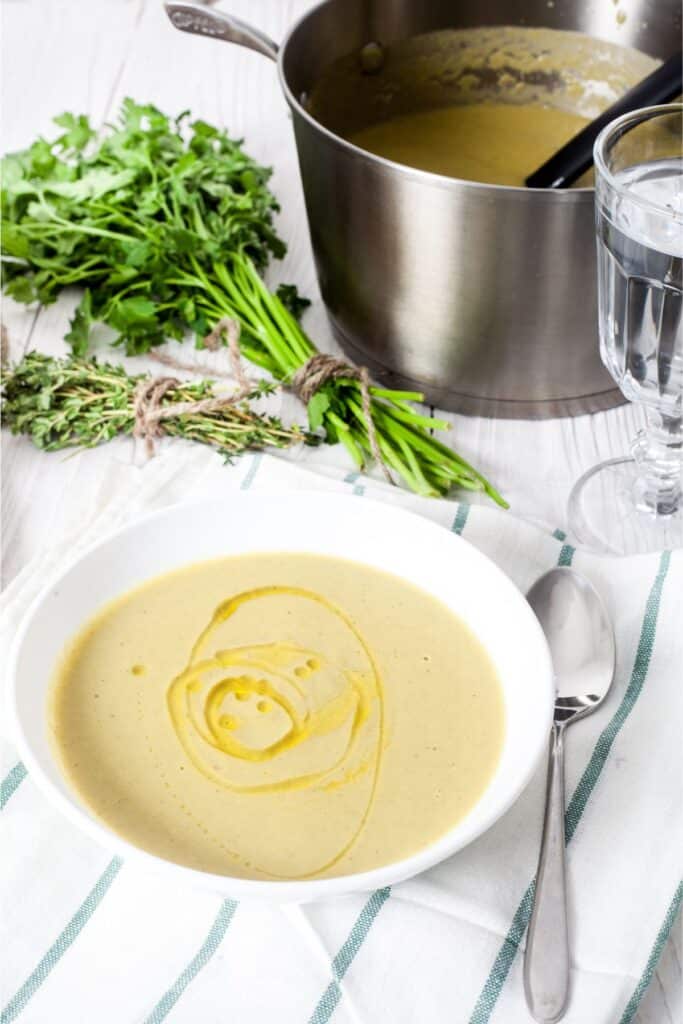
126. Potato Salad
127. Almond Milk
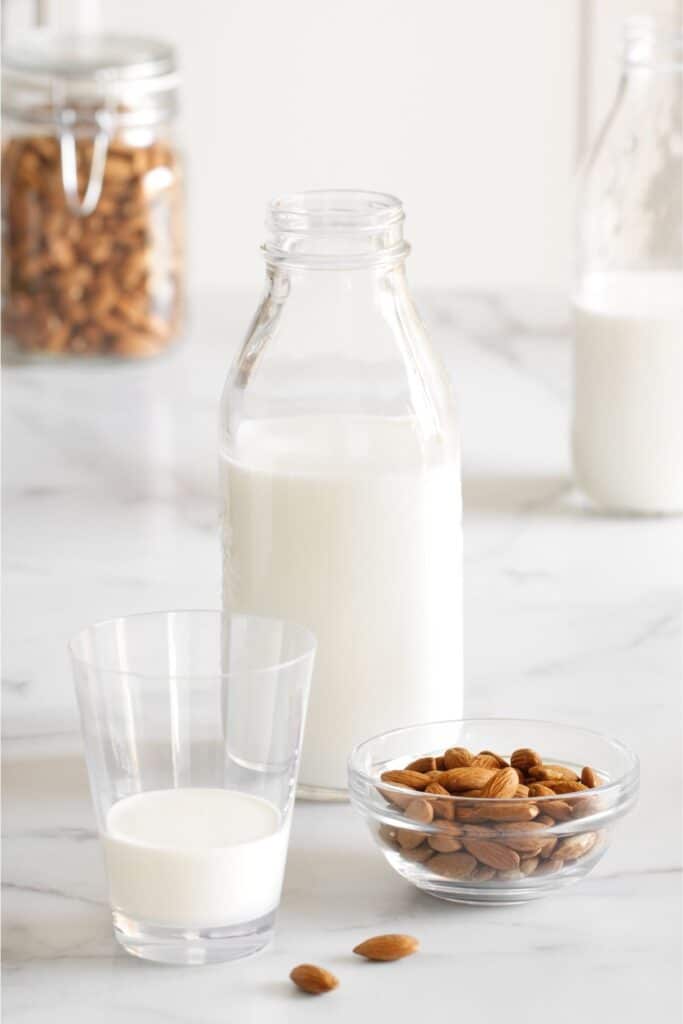
128. Soy Milk
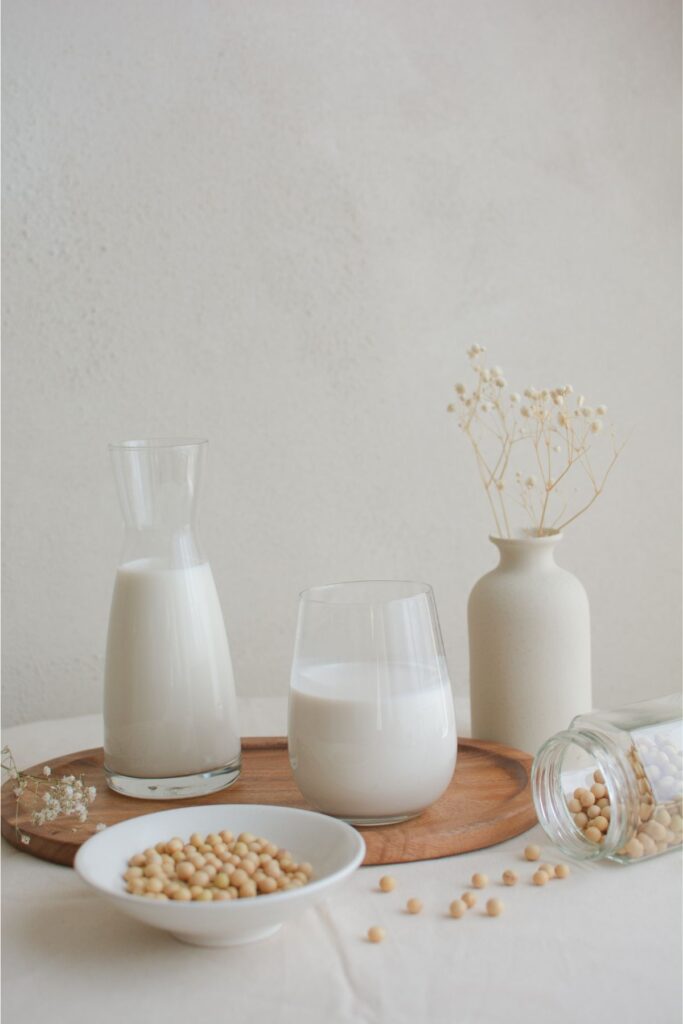
129. Tofu
Enjoy tofu in this Lemongrass Pho!
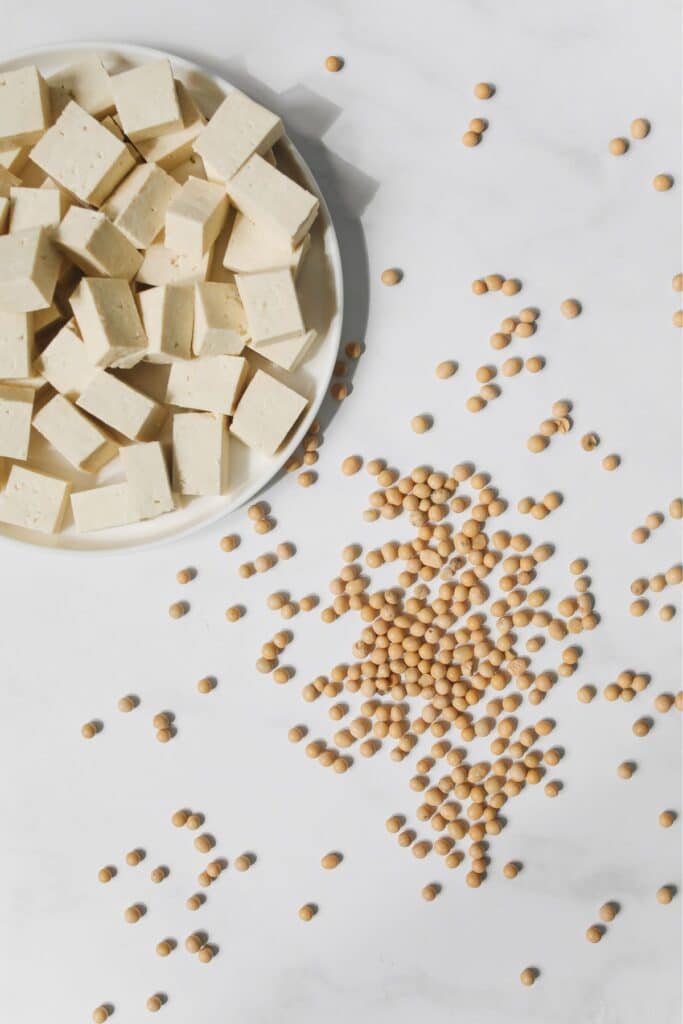
130. Vegan Mayonnaise
FAQ
Healthy foods that are white contain a lot of nutrients we need in our diet and can help lower our cholesterol and high blood pressure while improving our skin health. Just make sure you are always consuming and filling your plate with a wide variety of colorful foods at all times
Yes, a cauliflower is considered white because the sun does not reach the florets when growing.
There are certain types of white grains such as white rice, bread, and pasta that you should not so much avoid but not consume a heavy amount of eating day as they trigger a cycle of food cravings and release a spike of sugar into your bloodstream. Whole grains are a better alternative, as they are higher in fiber.
Final Words
So there you have it! A very long list of 130 different types of foods that are white in color. Remember that some contain a high source of vitamins and minerals that are great for the body, but most white grains will leave you feeling heavy and craving more food.
I hope you found this list helpful in some way, and remember to bookmark this page if you need to return in the future.
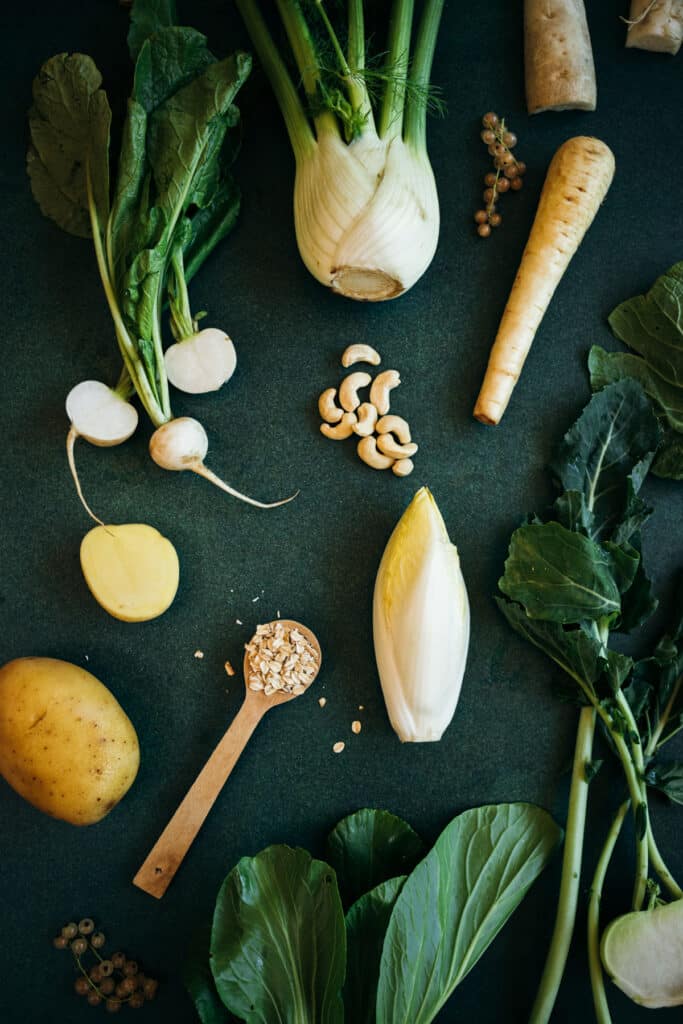

Such great photos. I love the white on green.
Thanks!